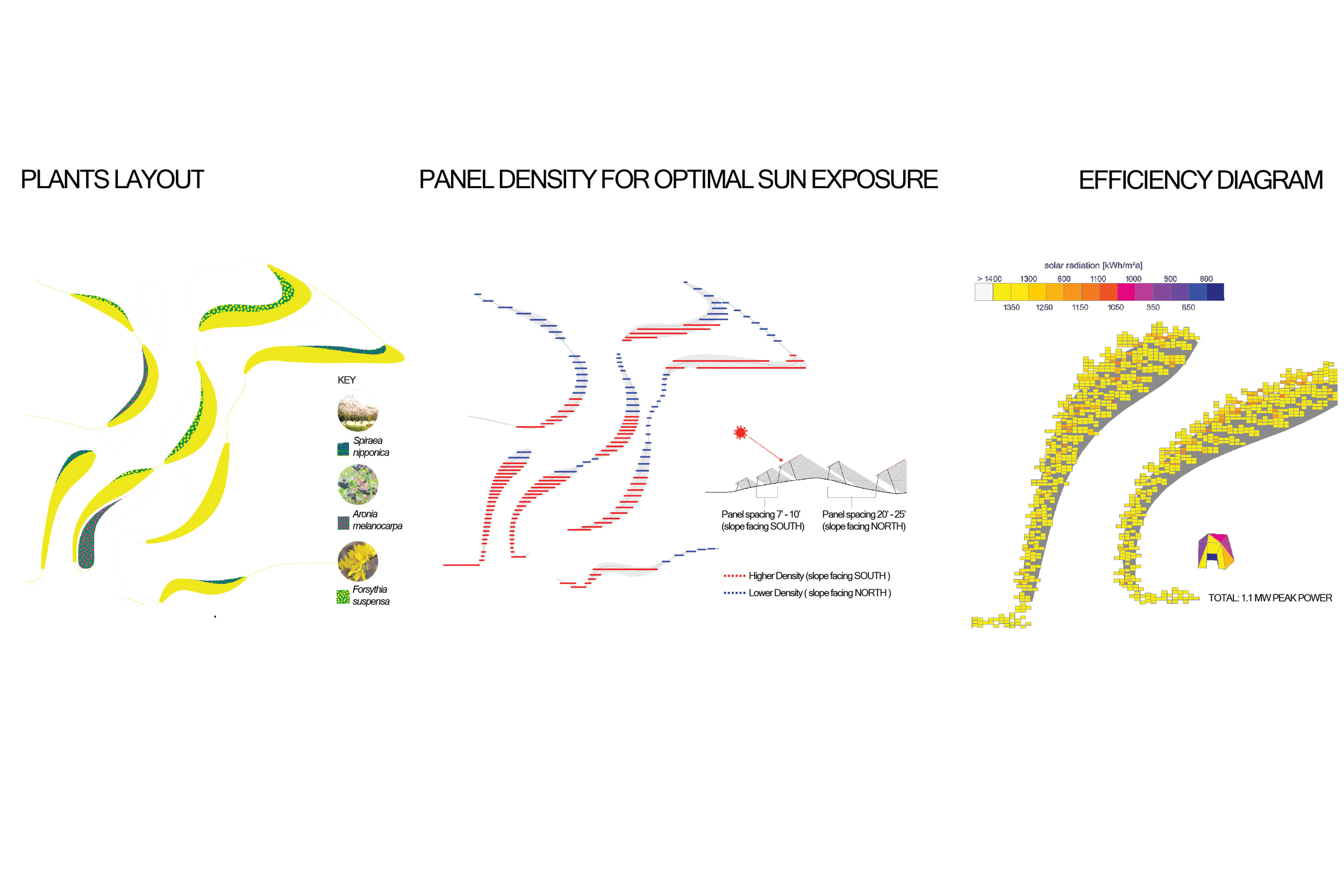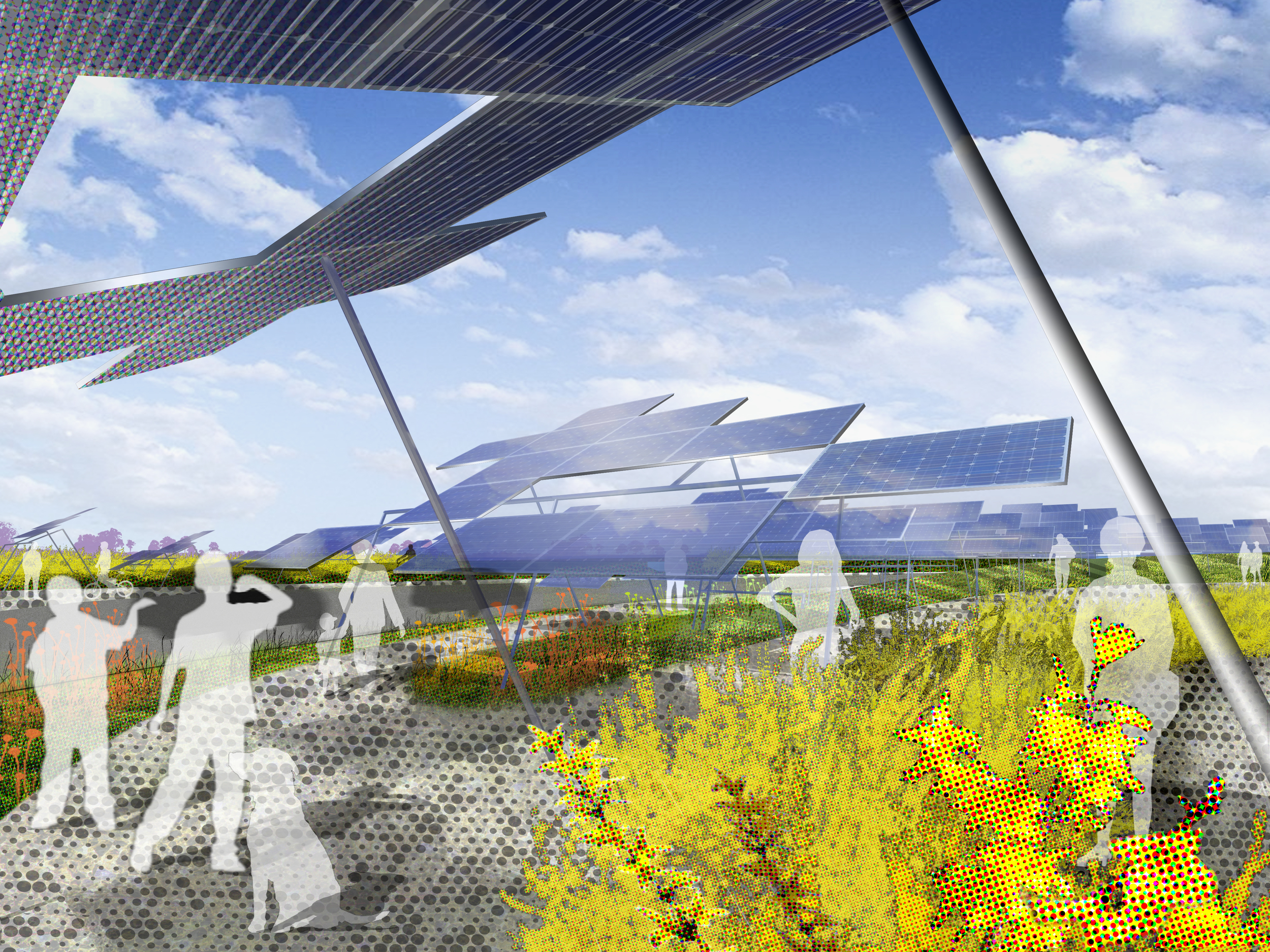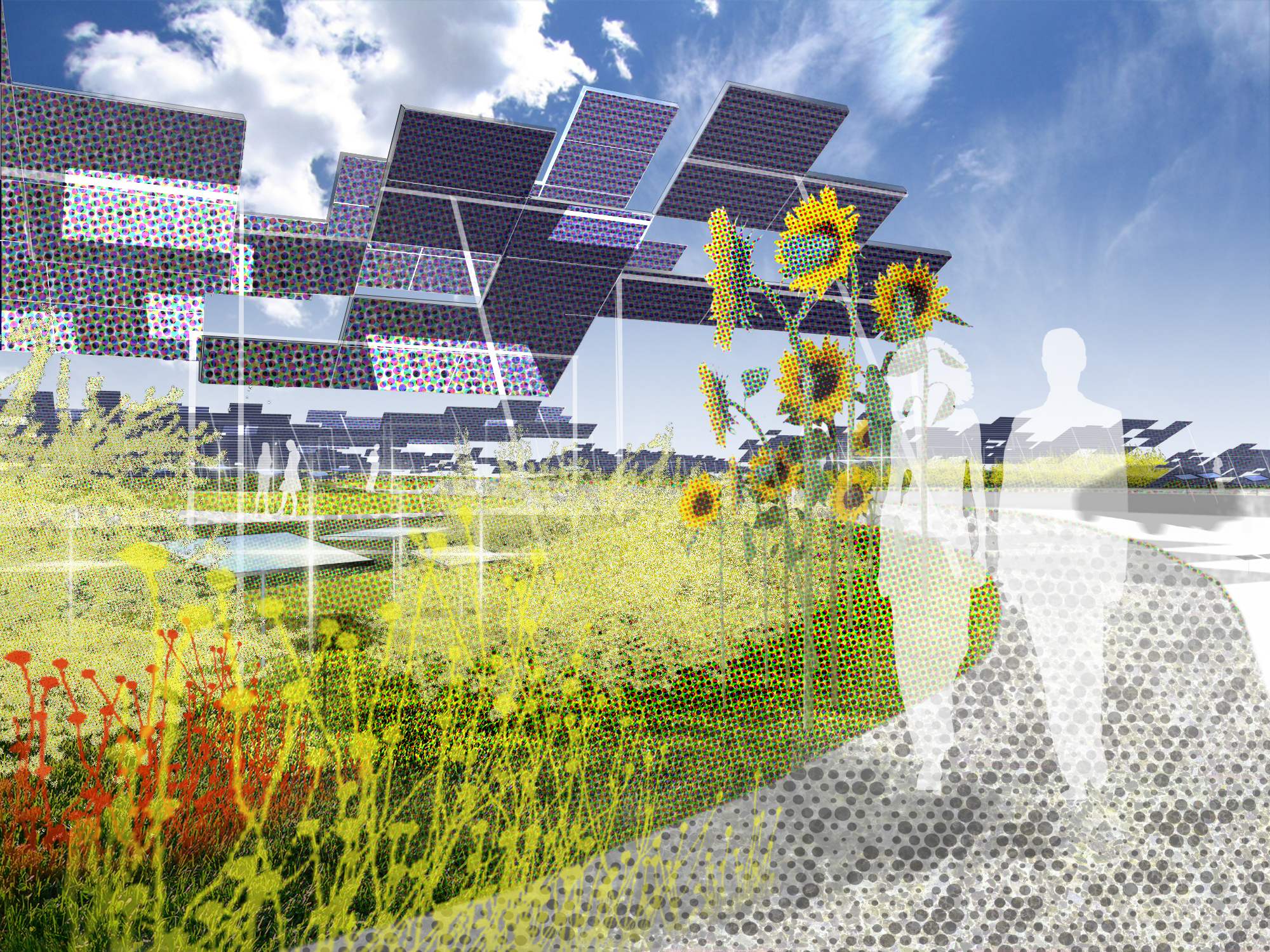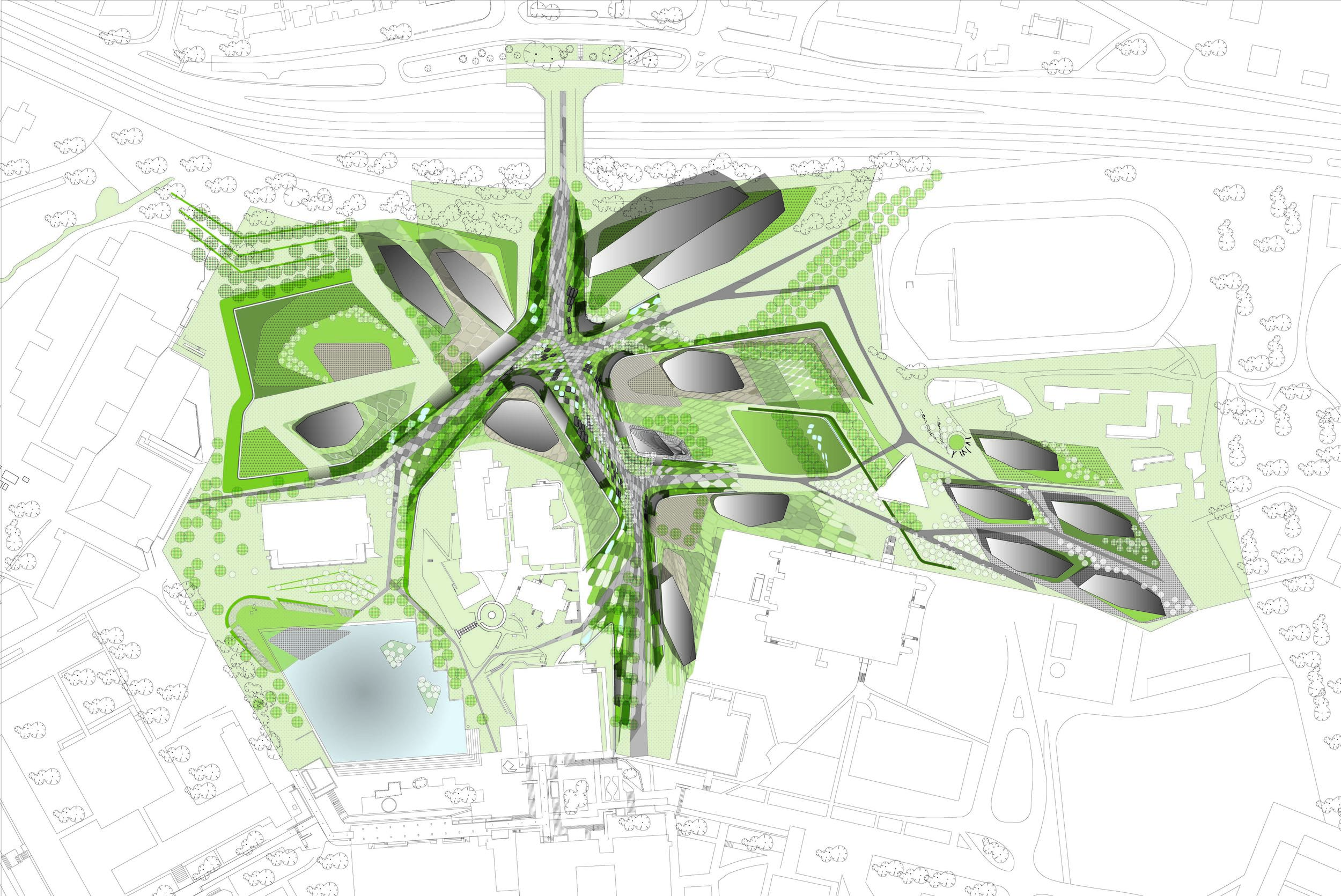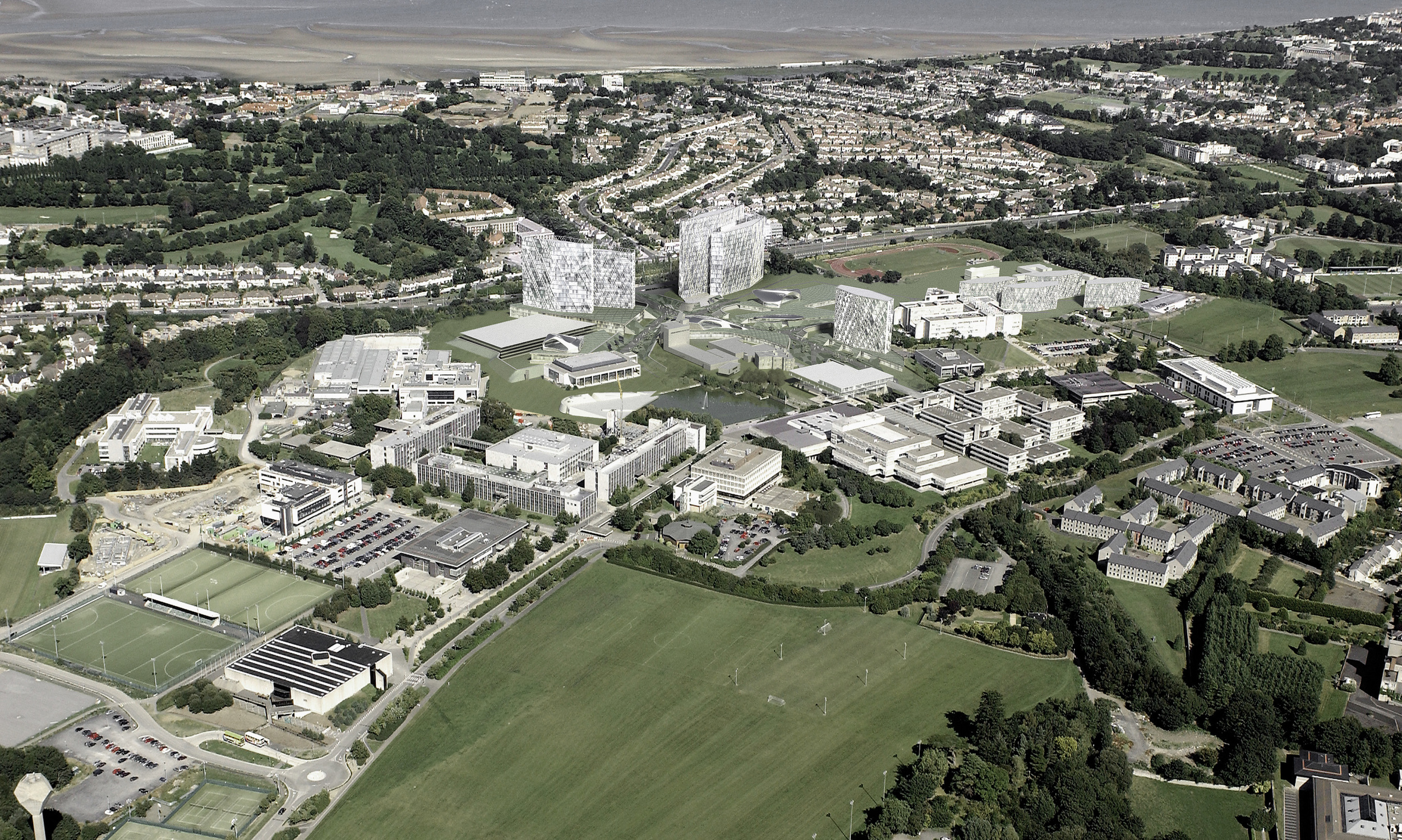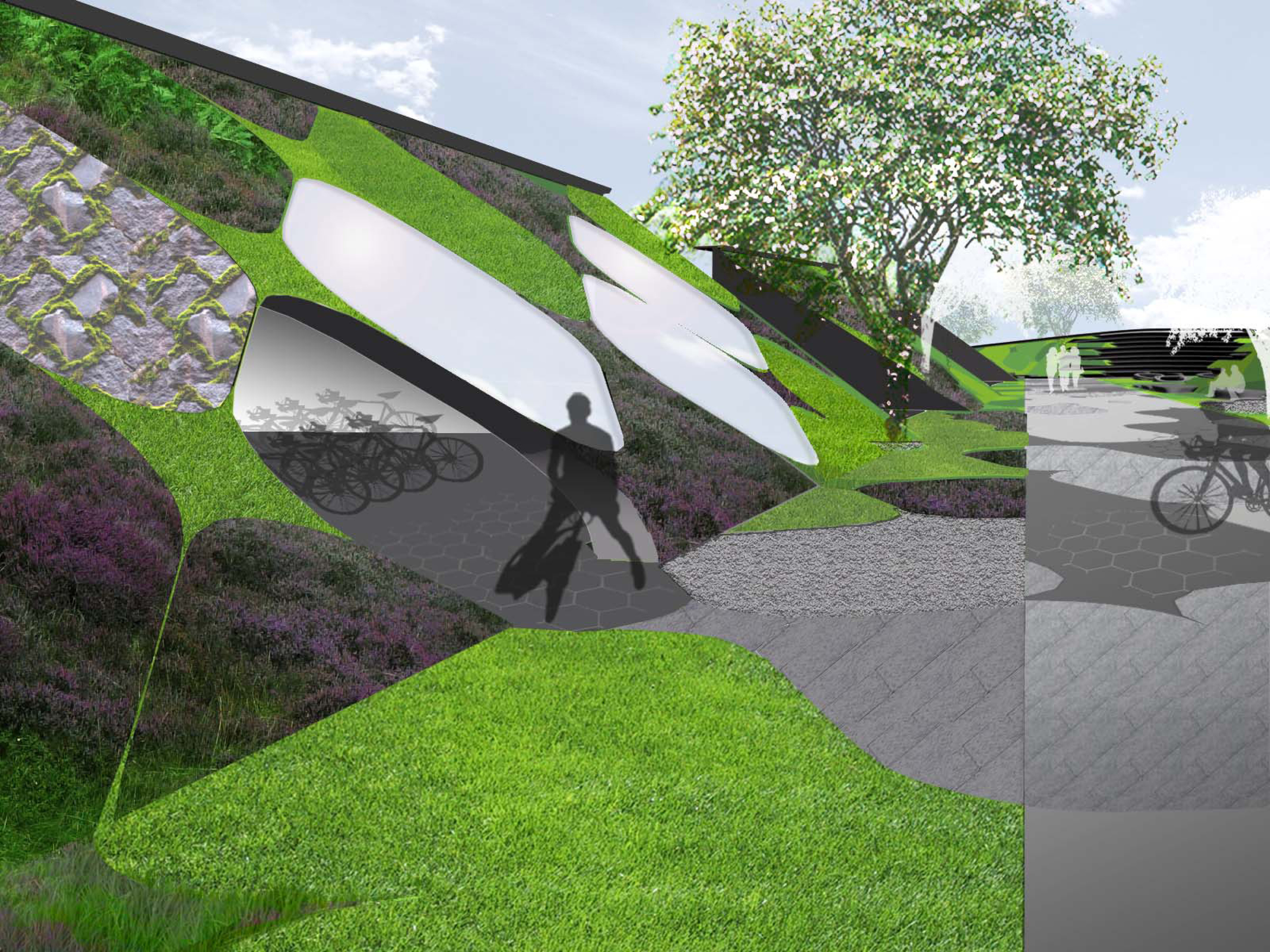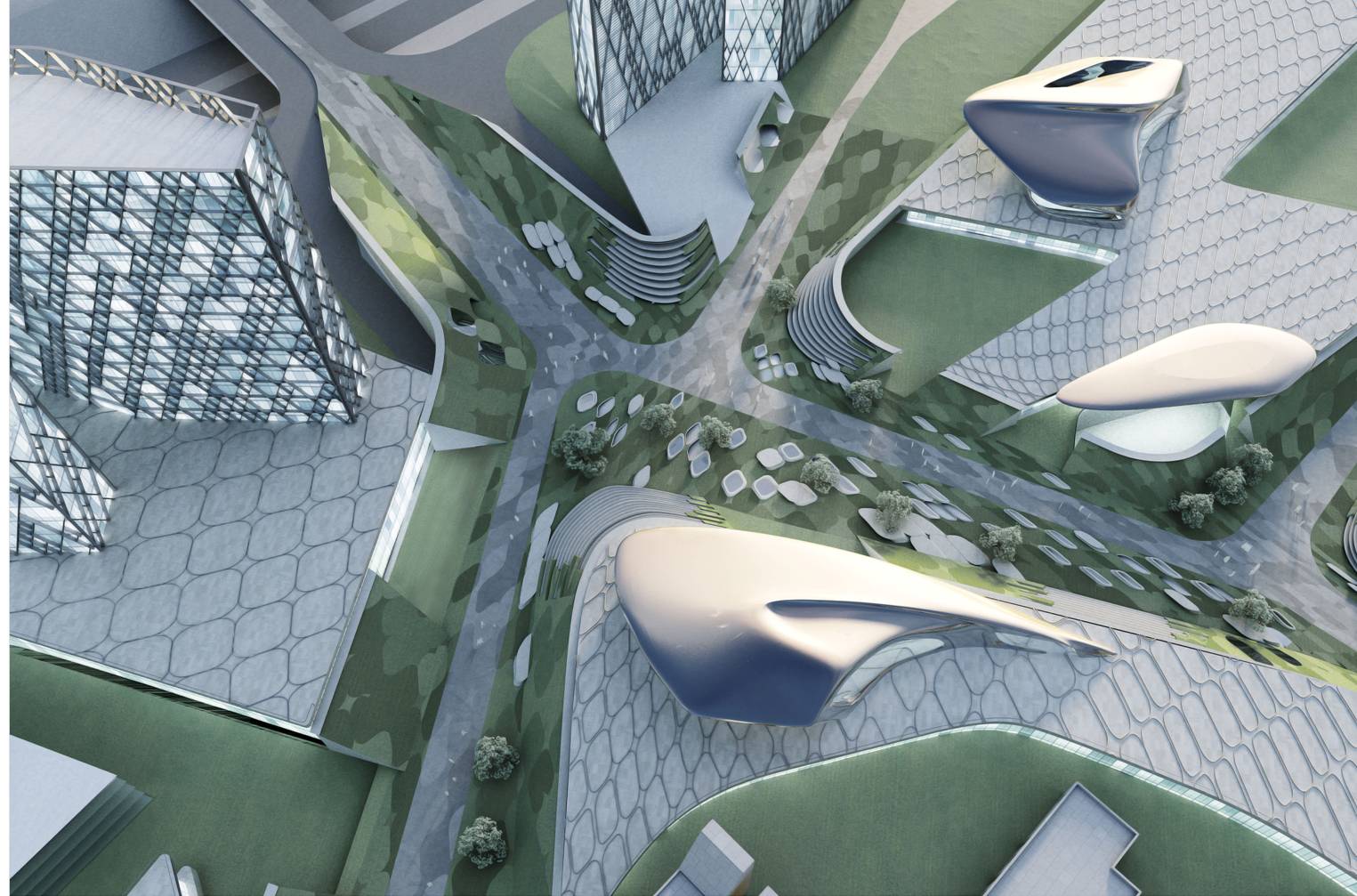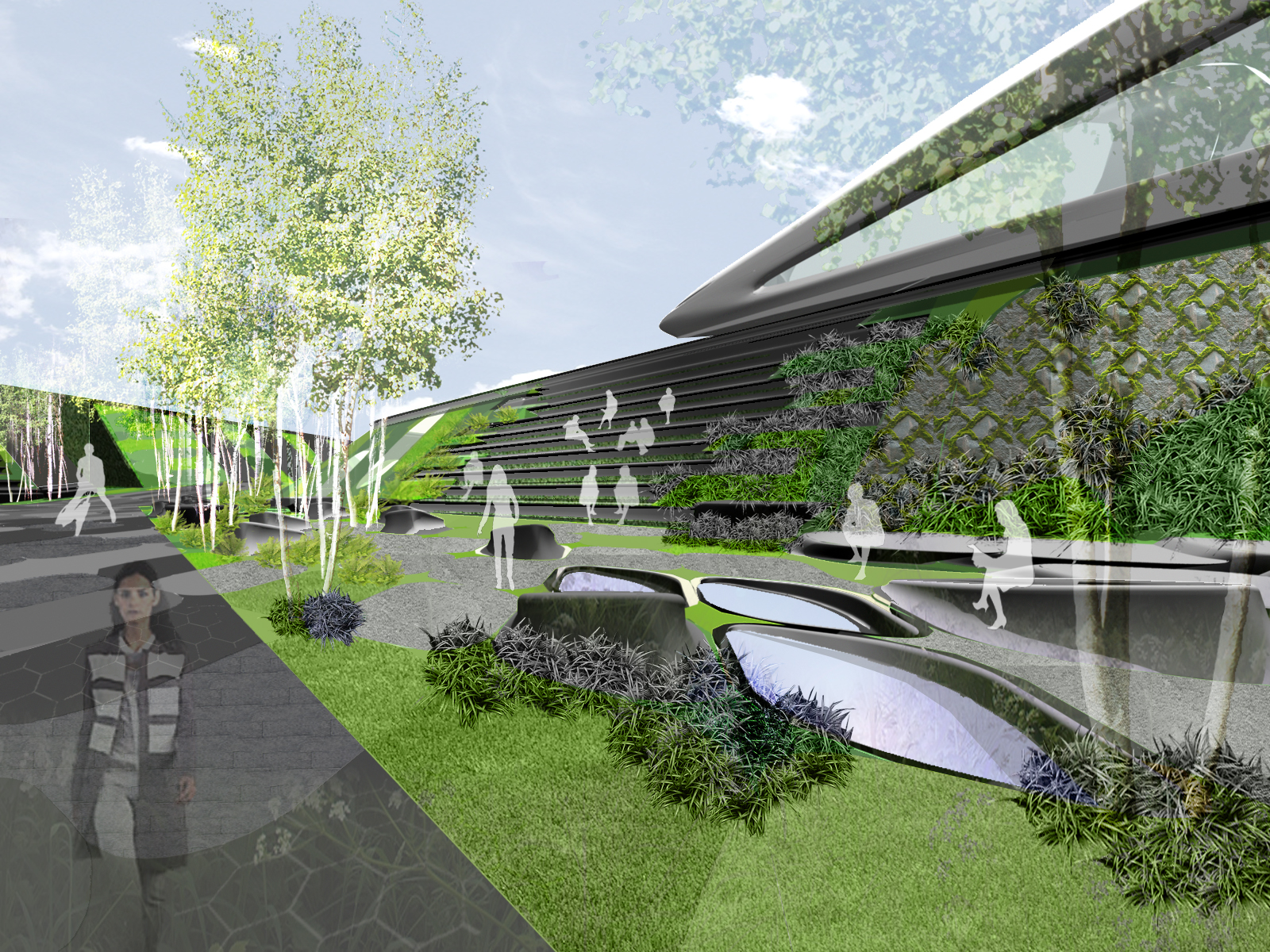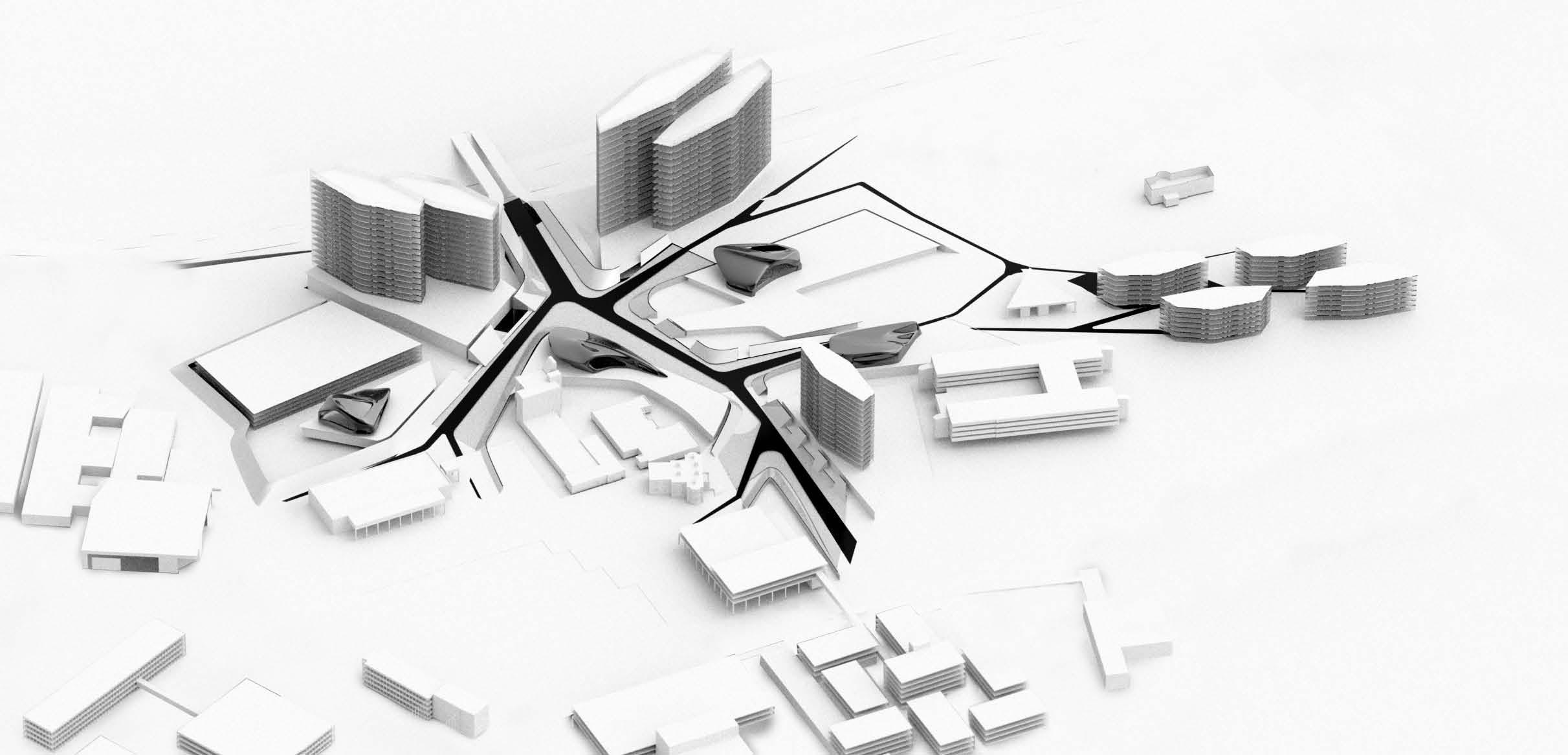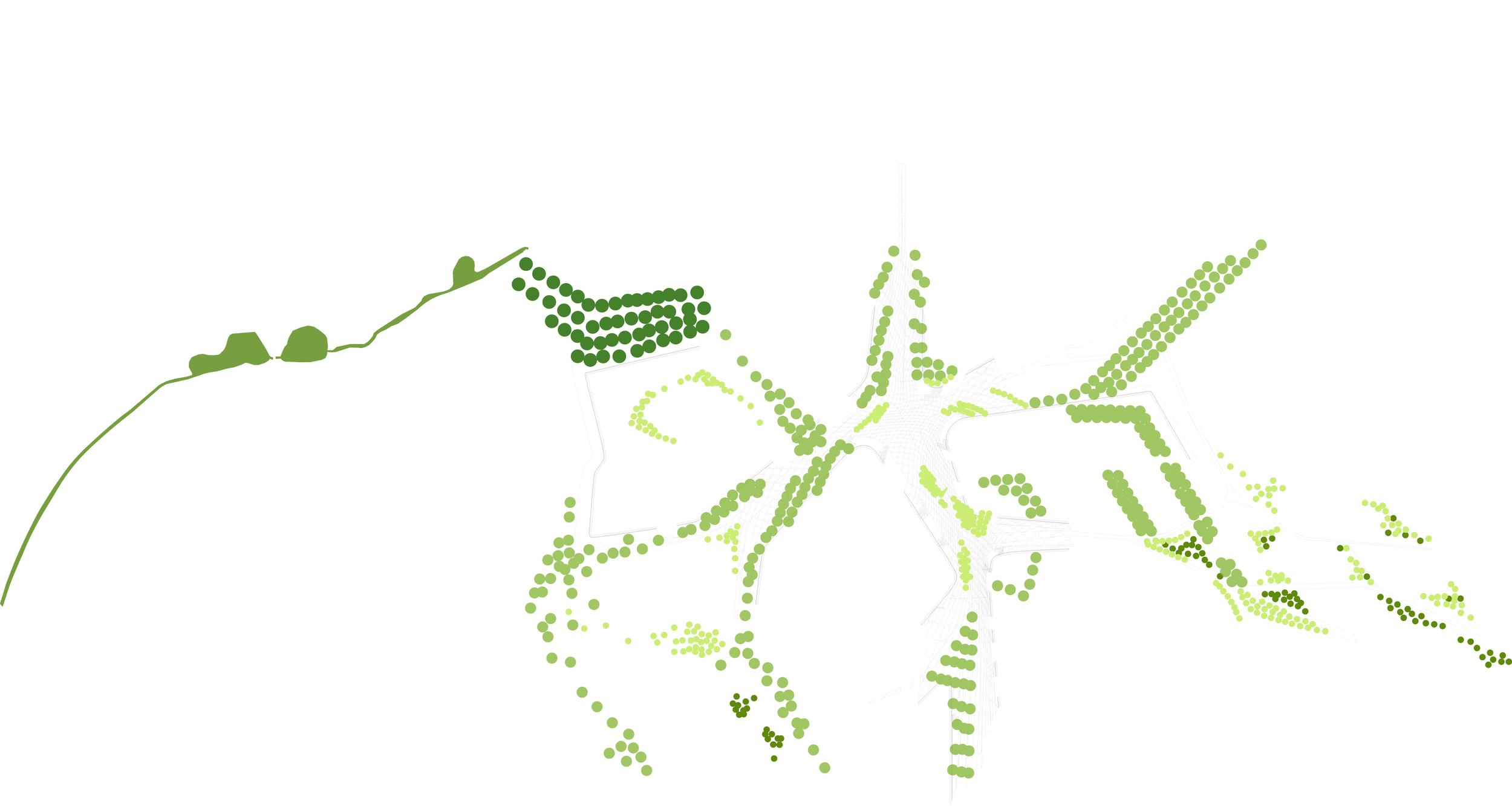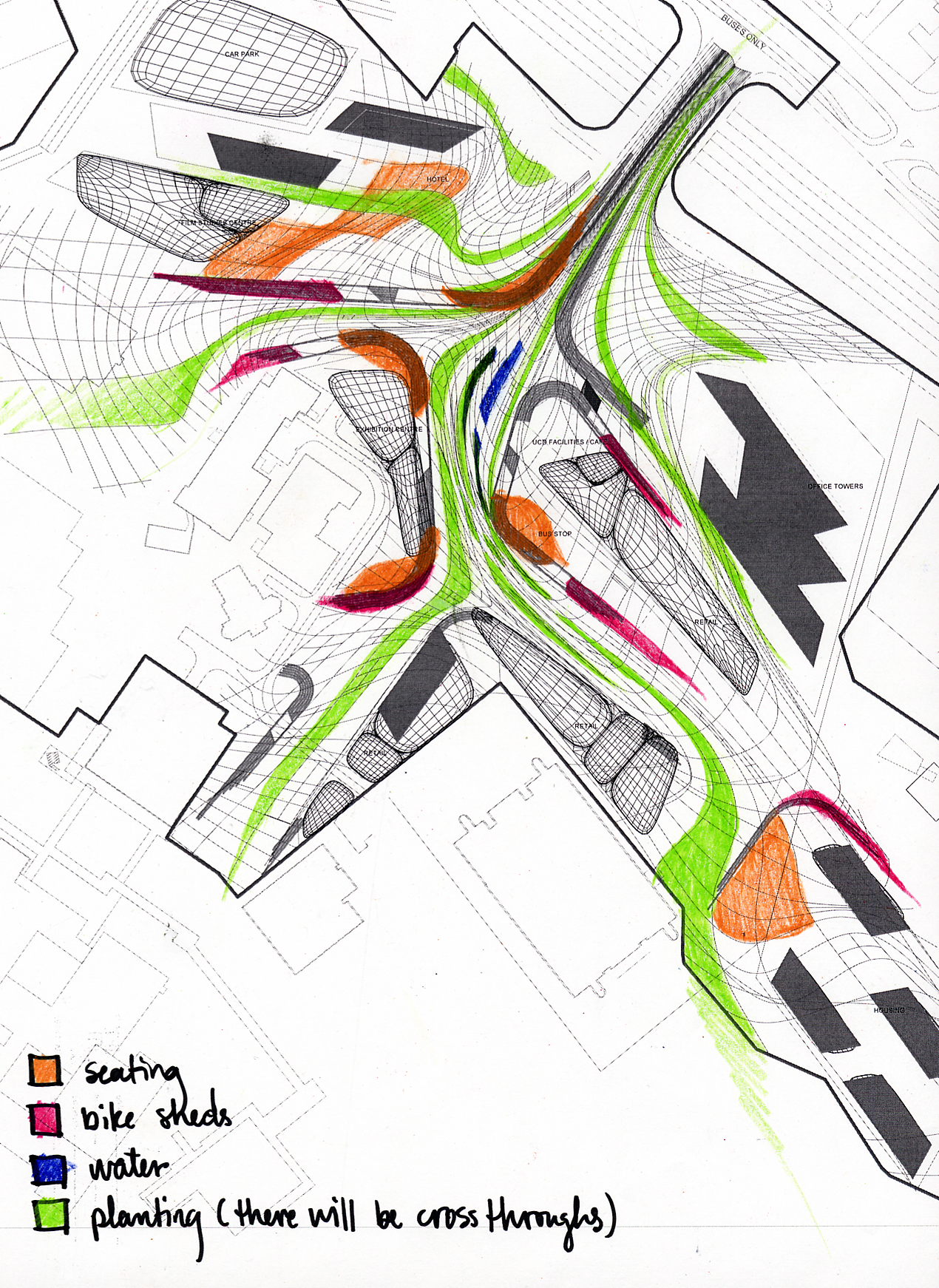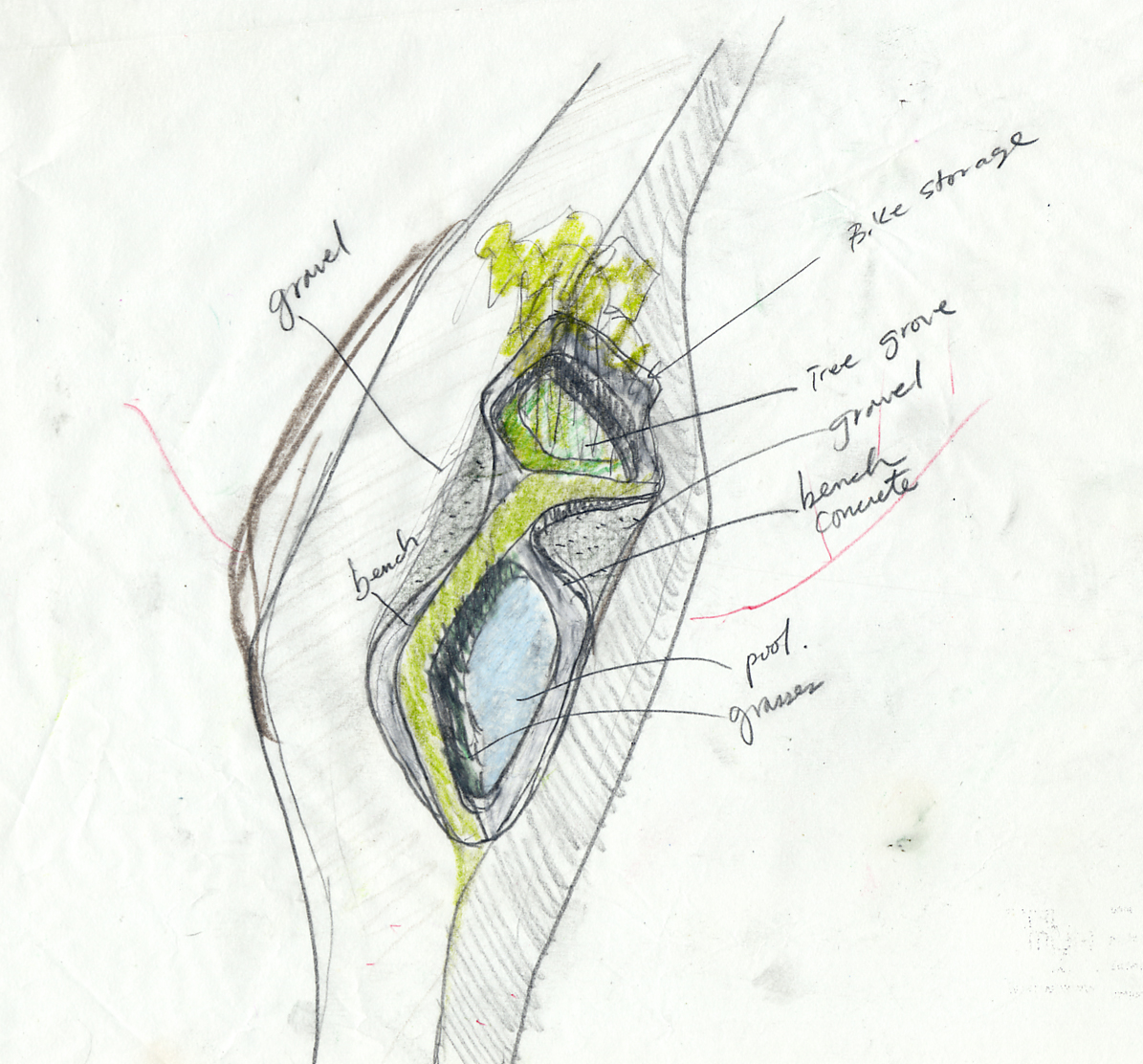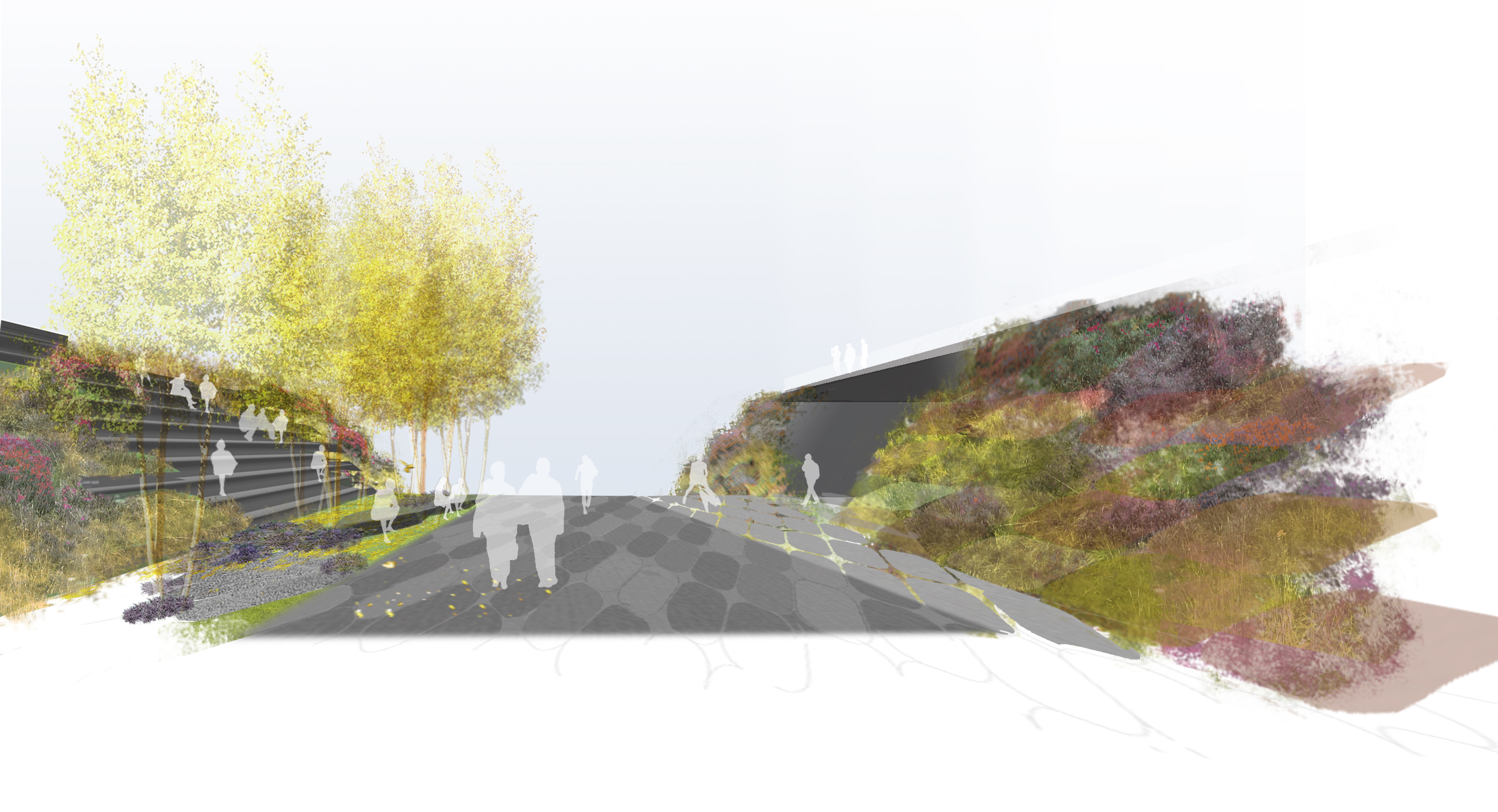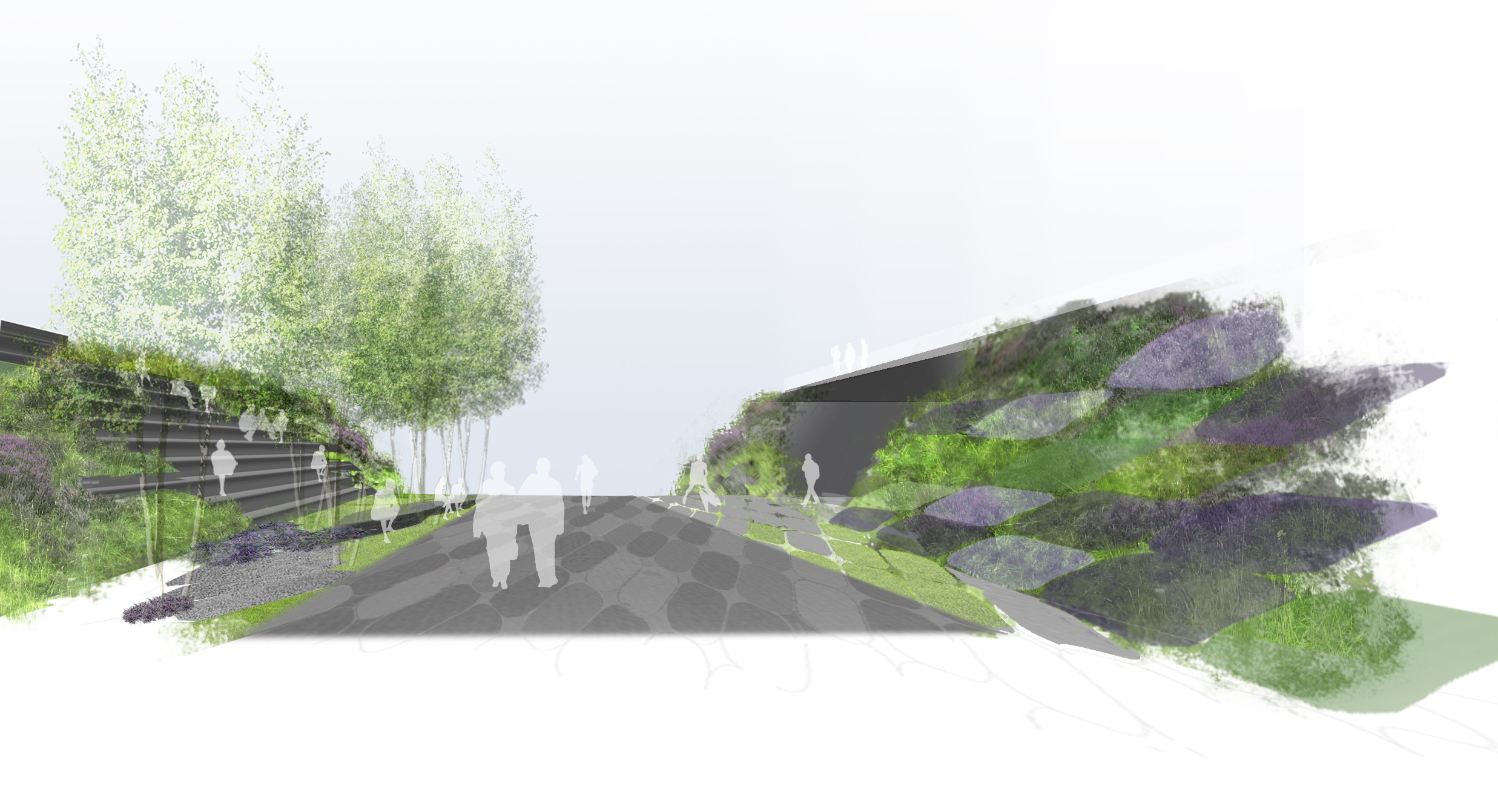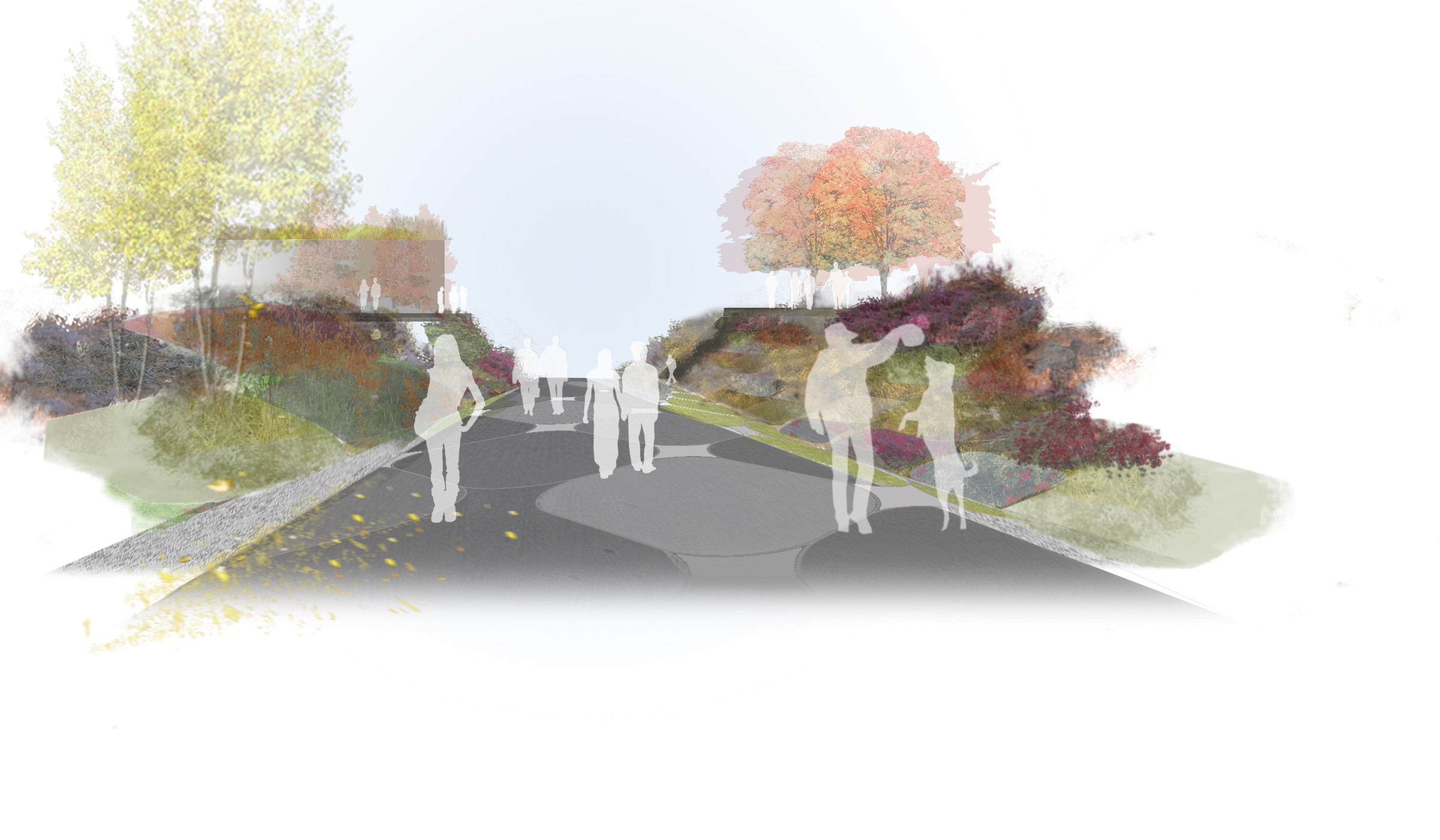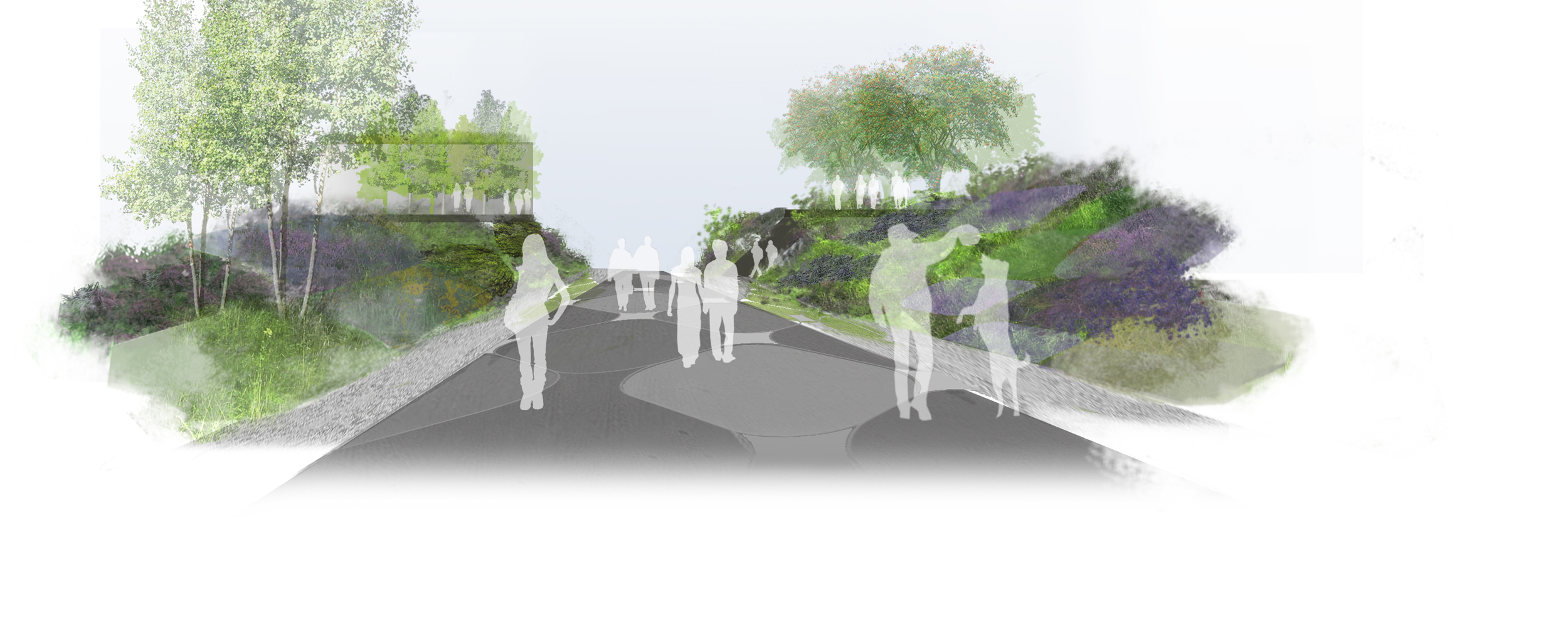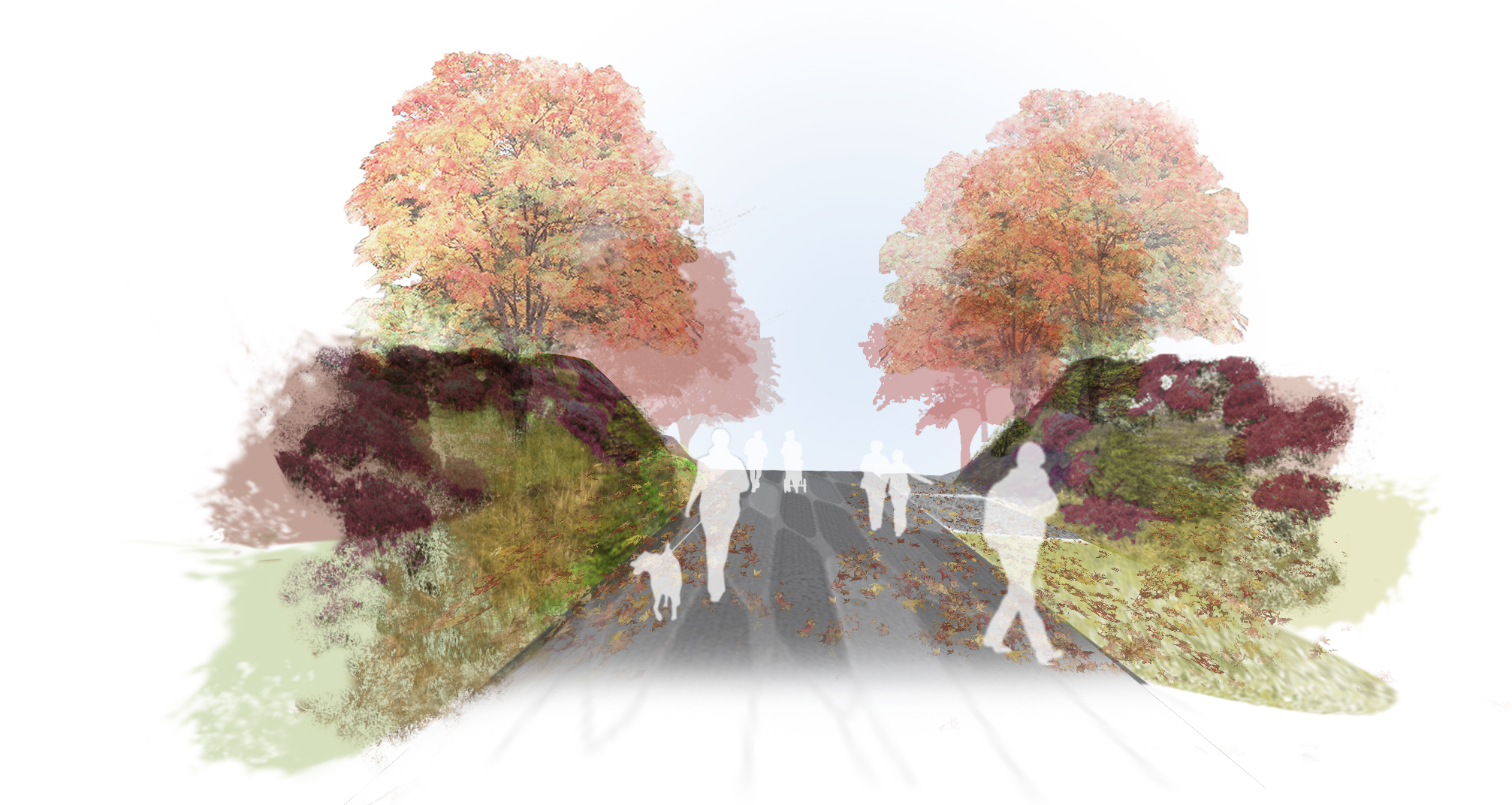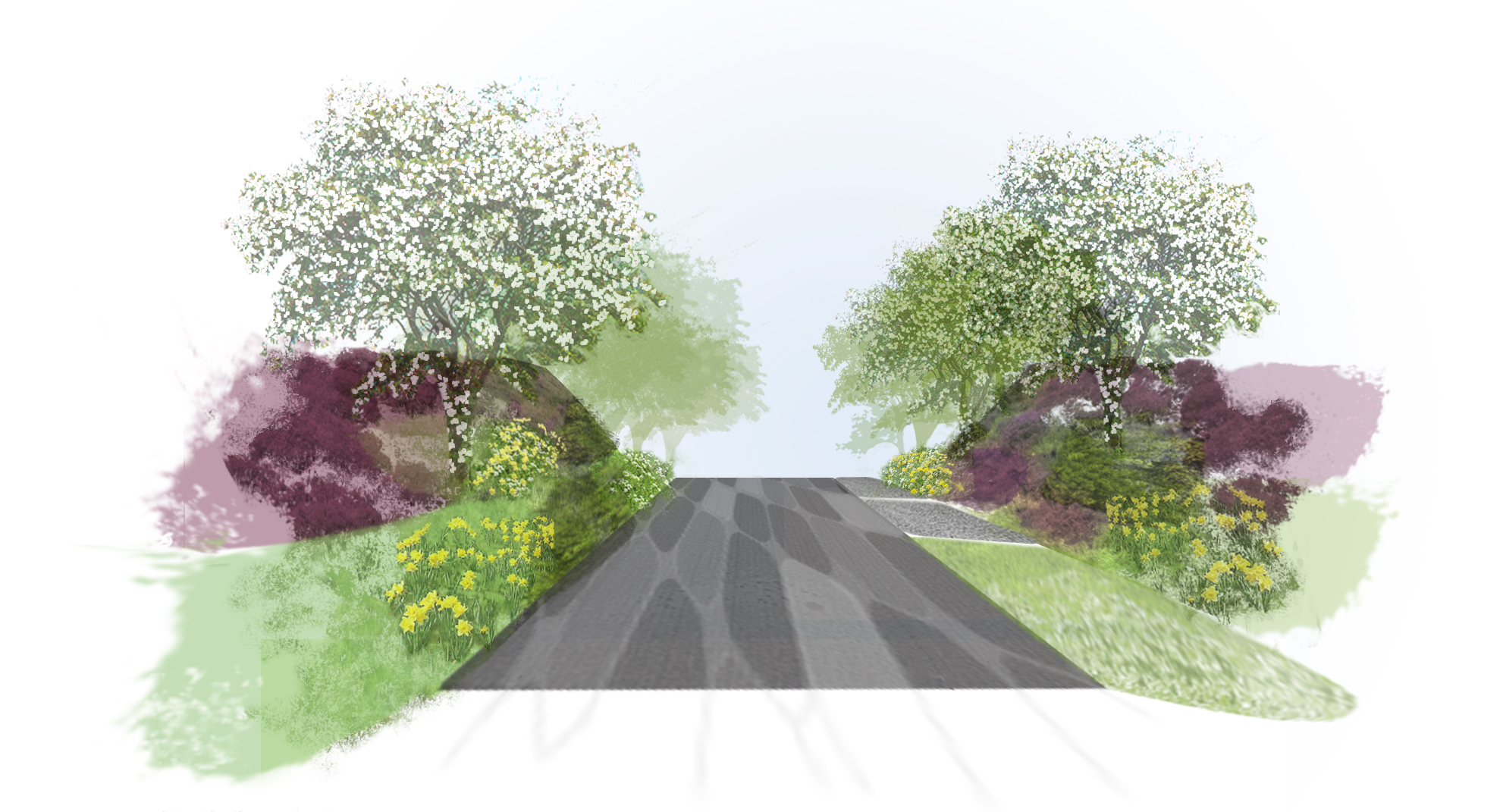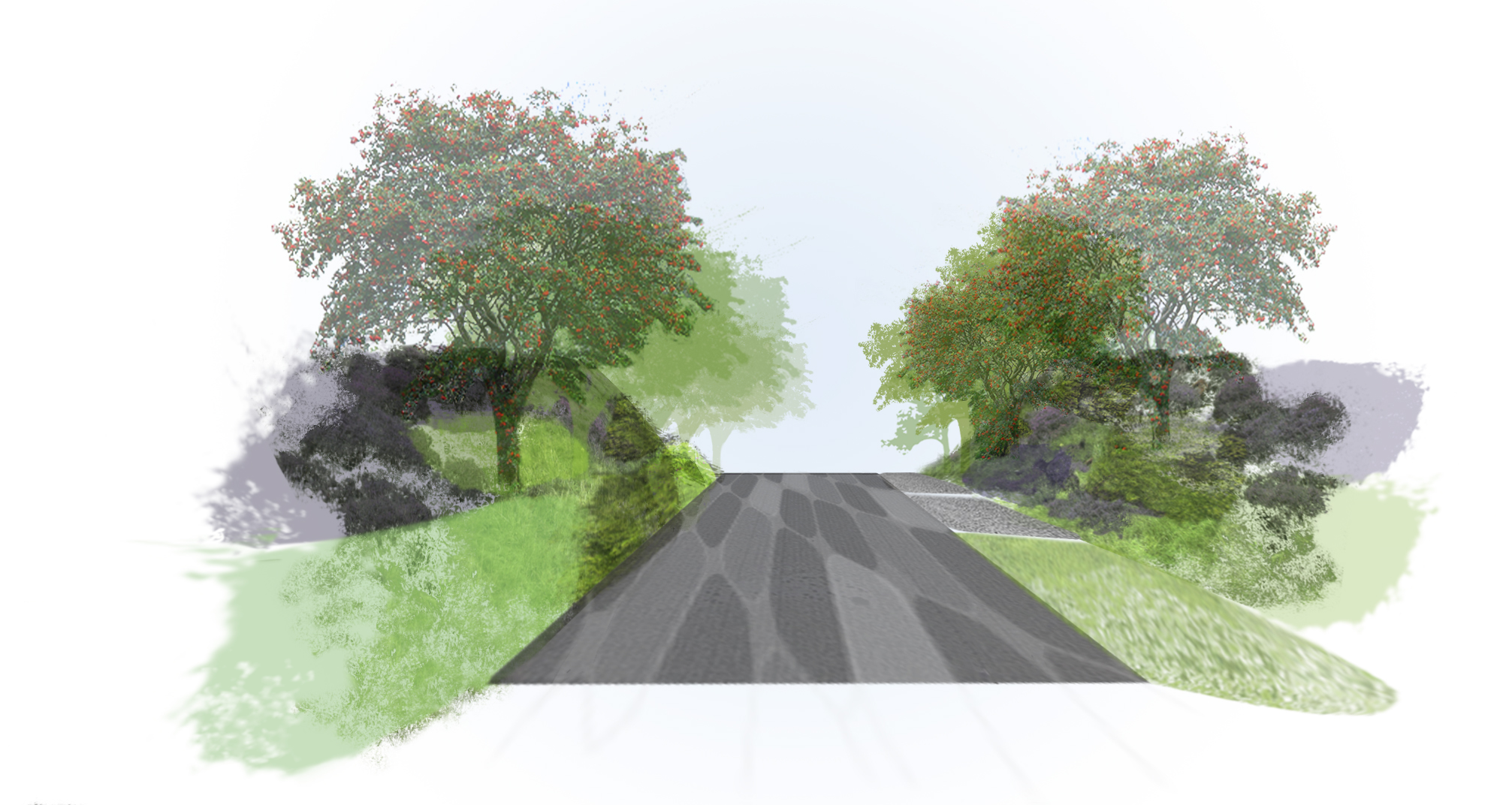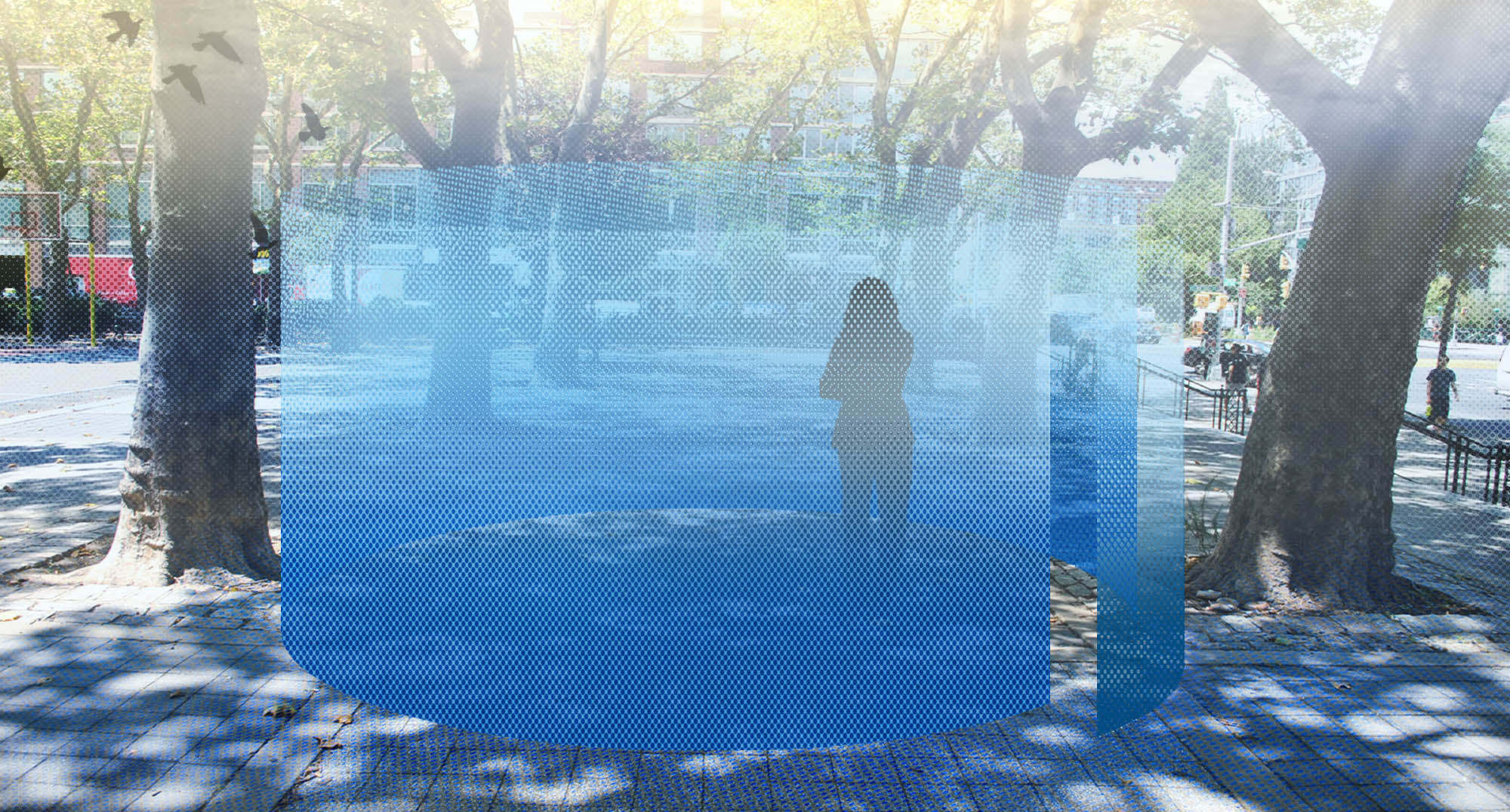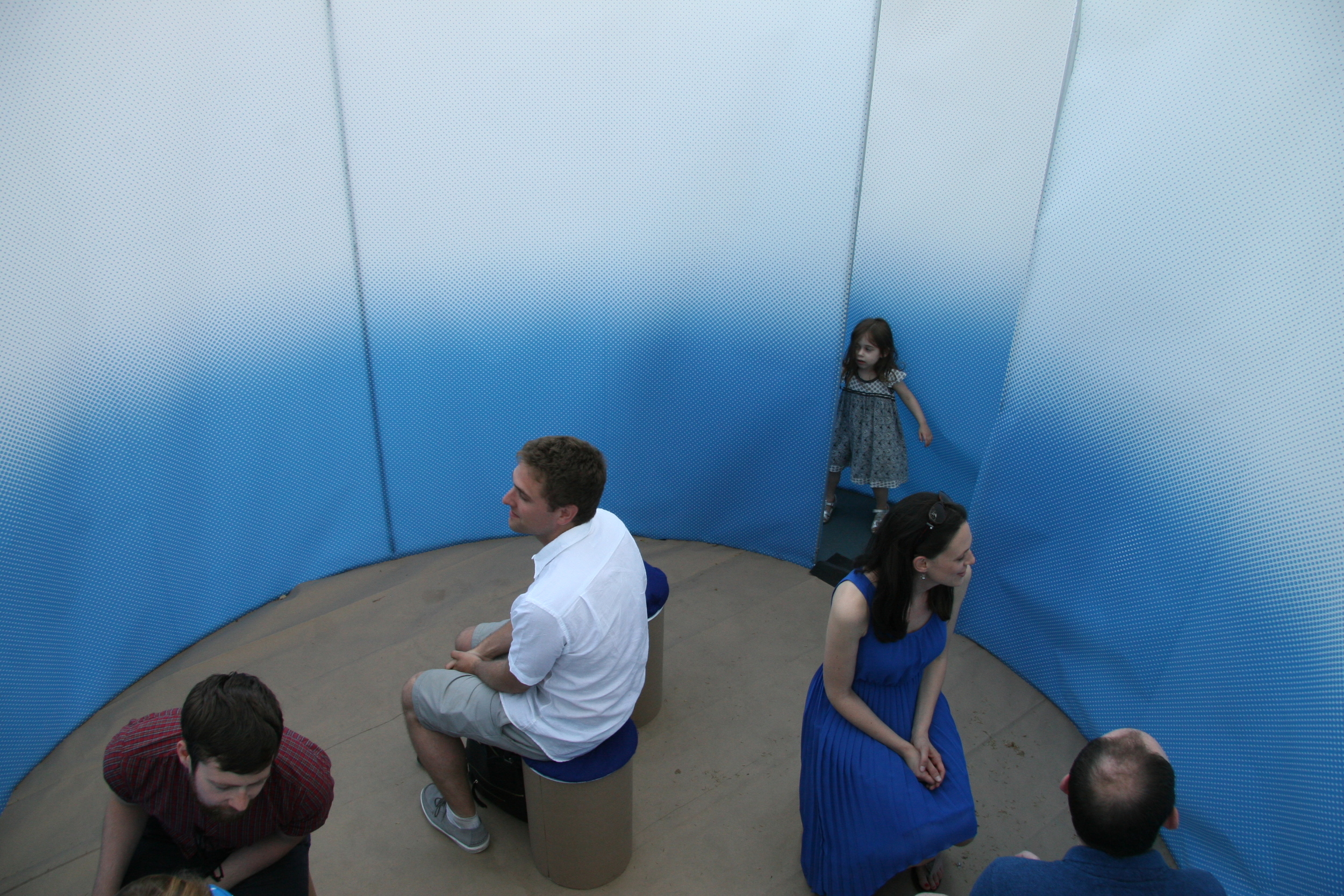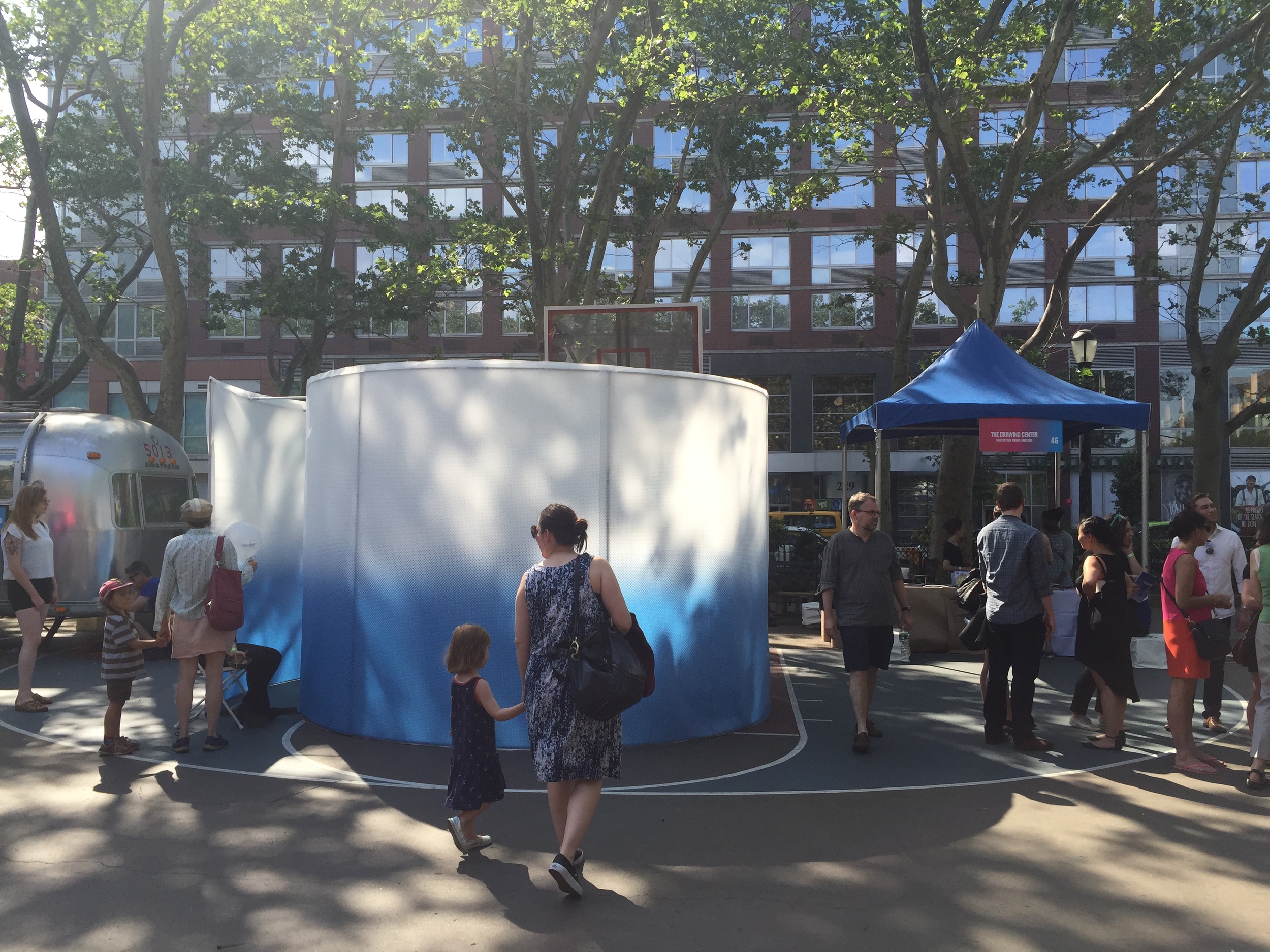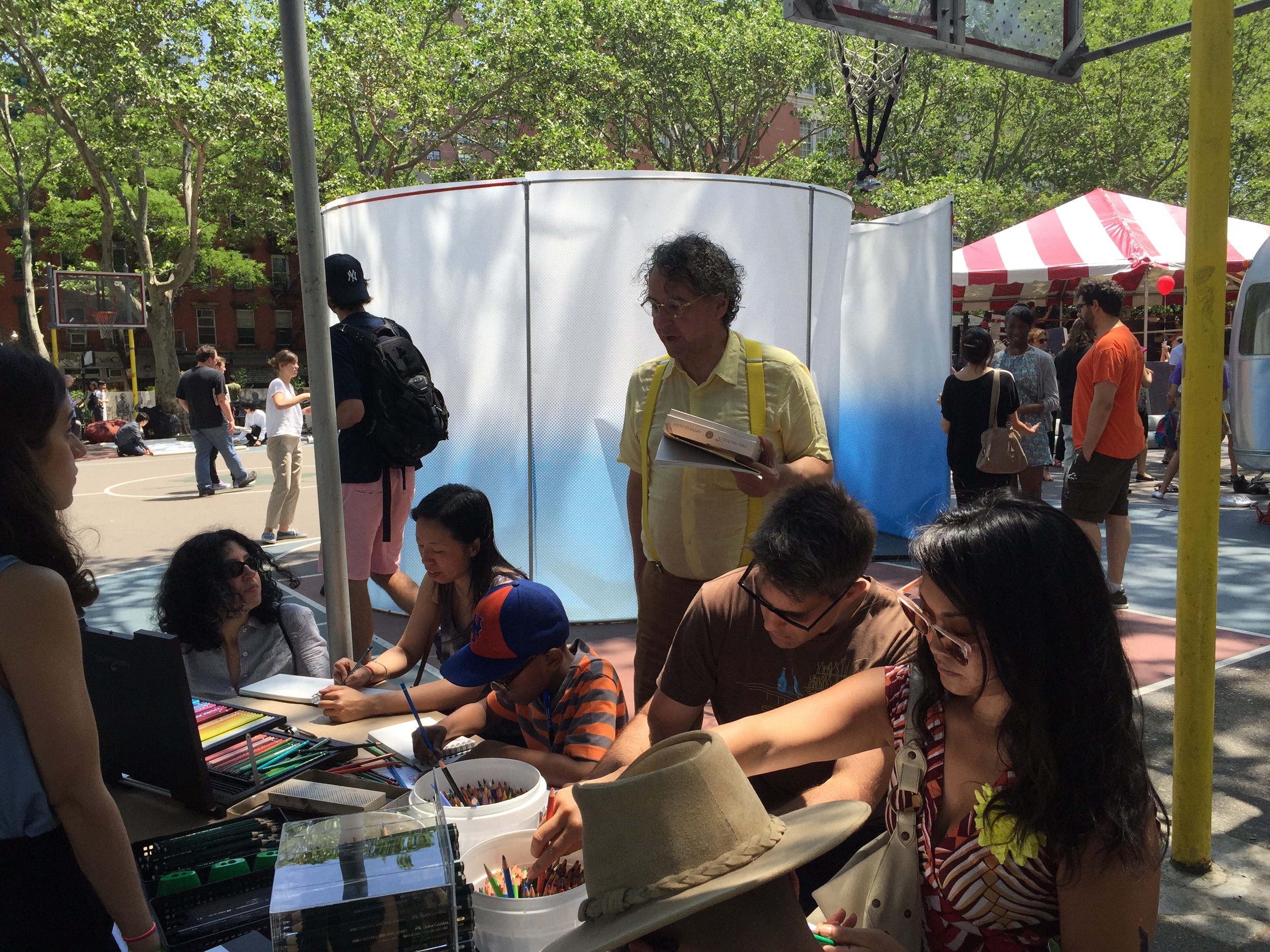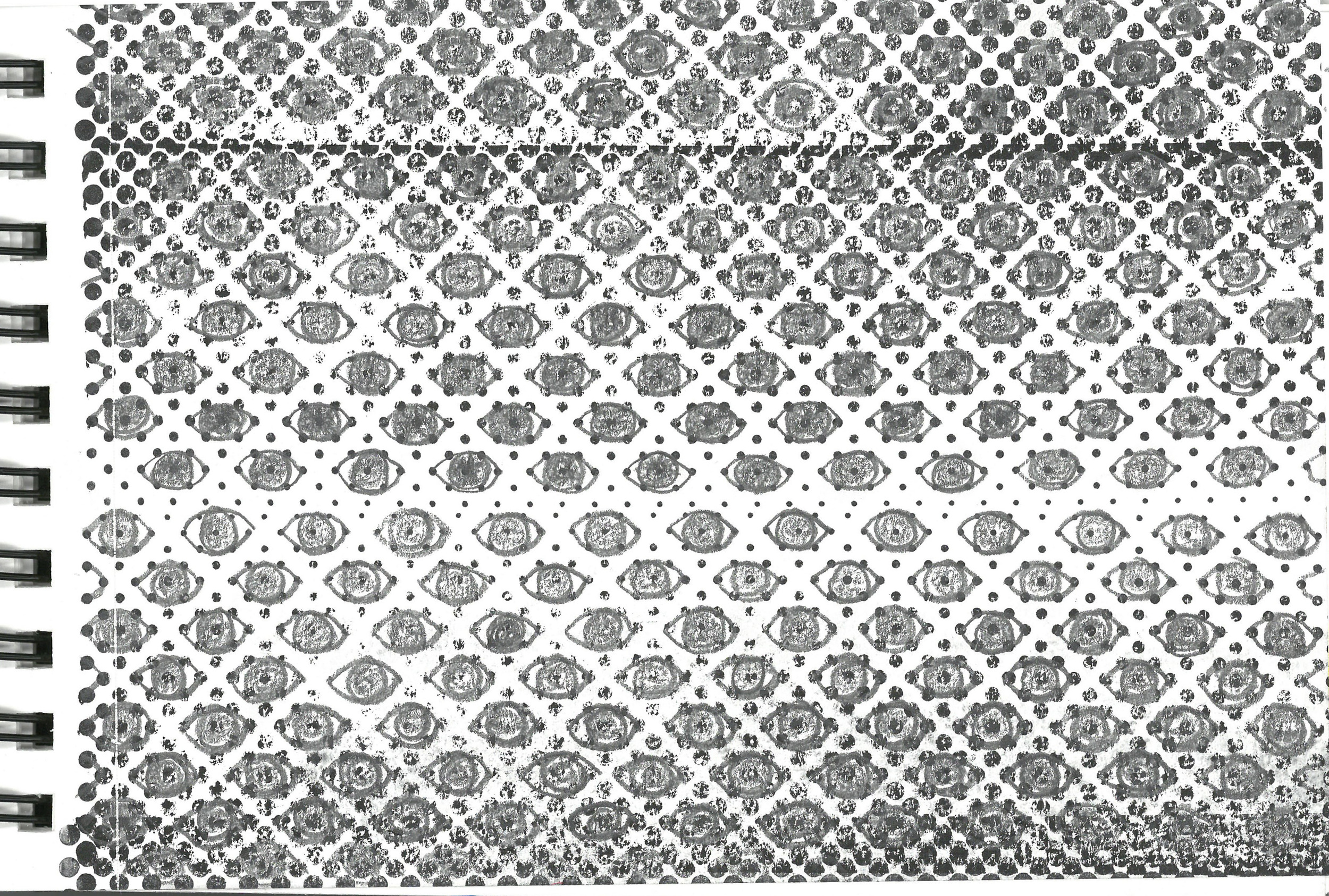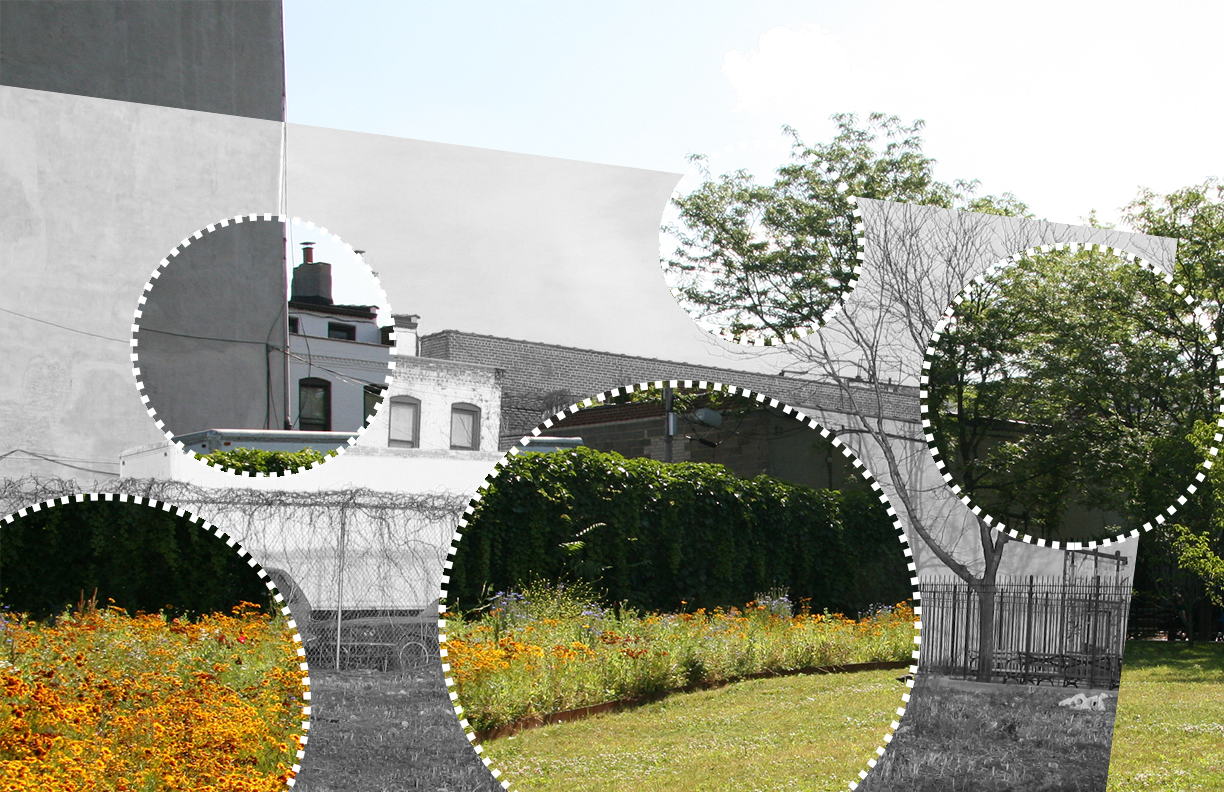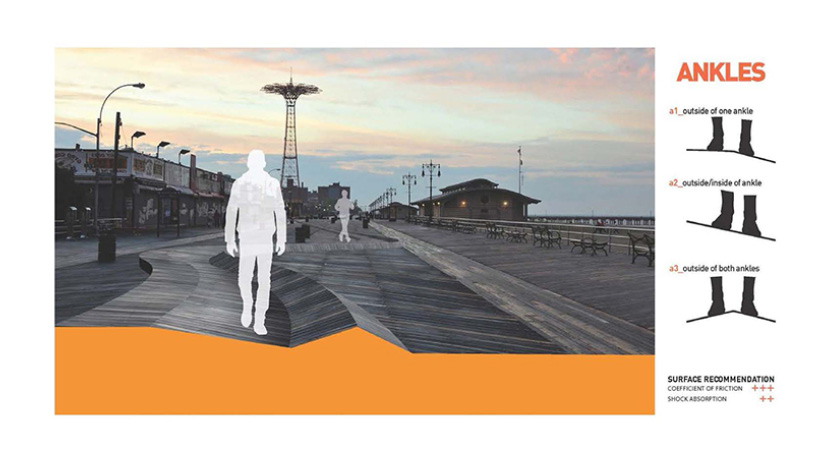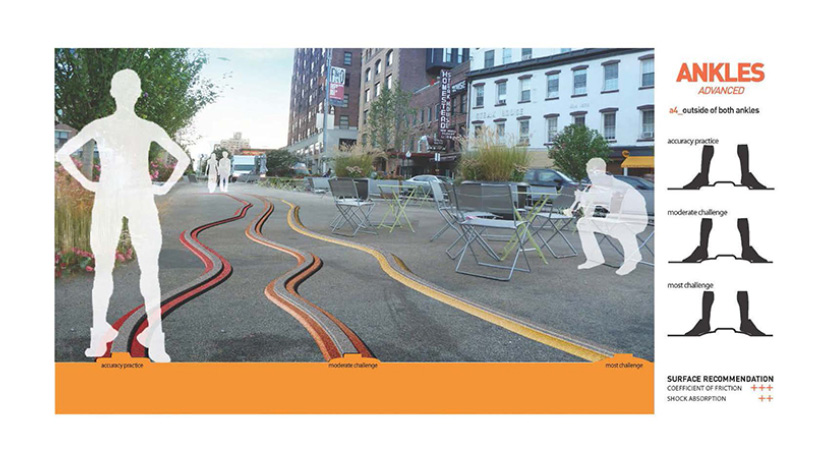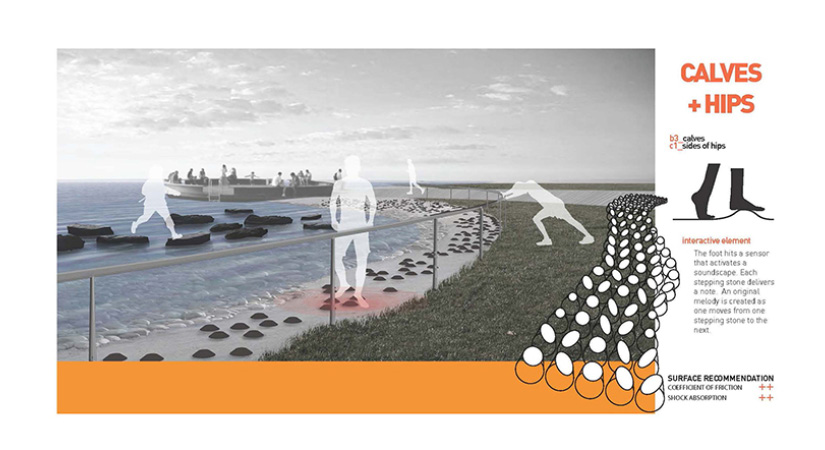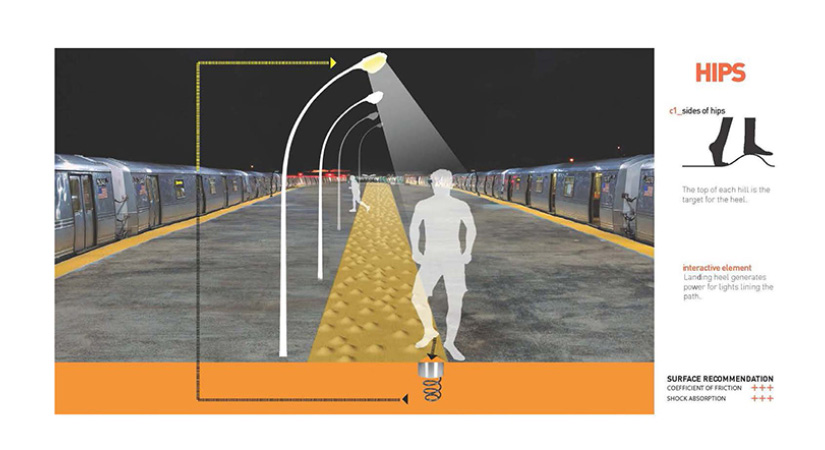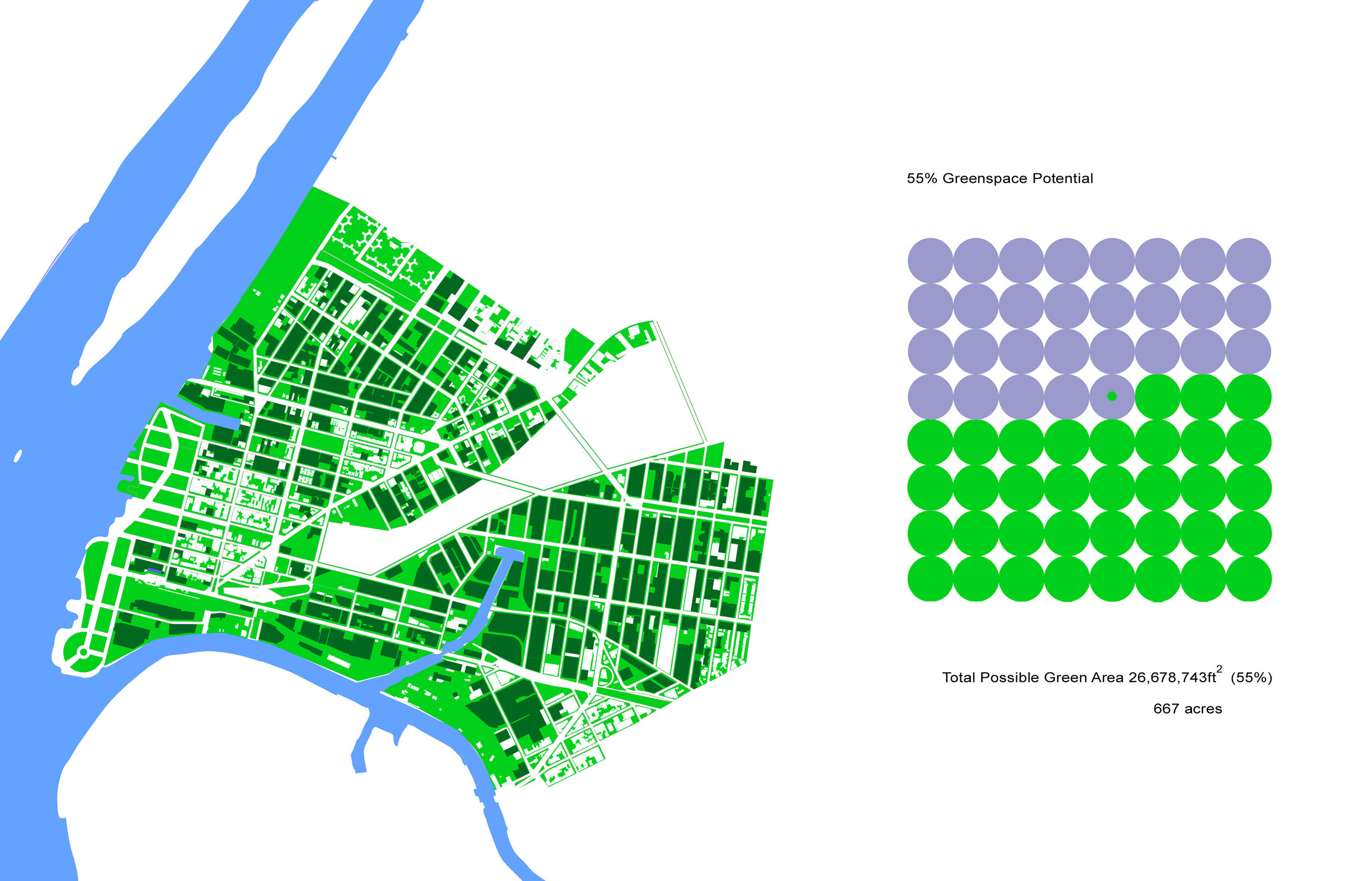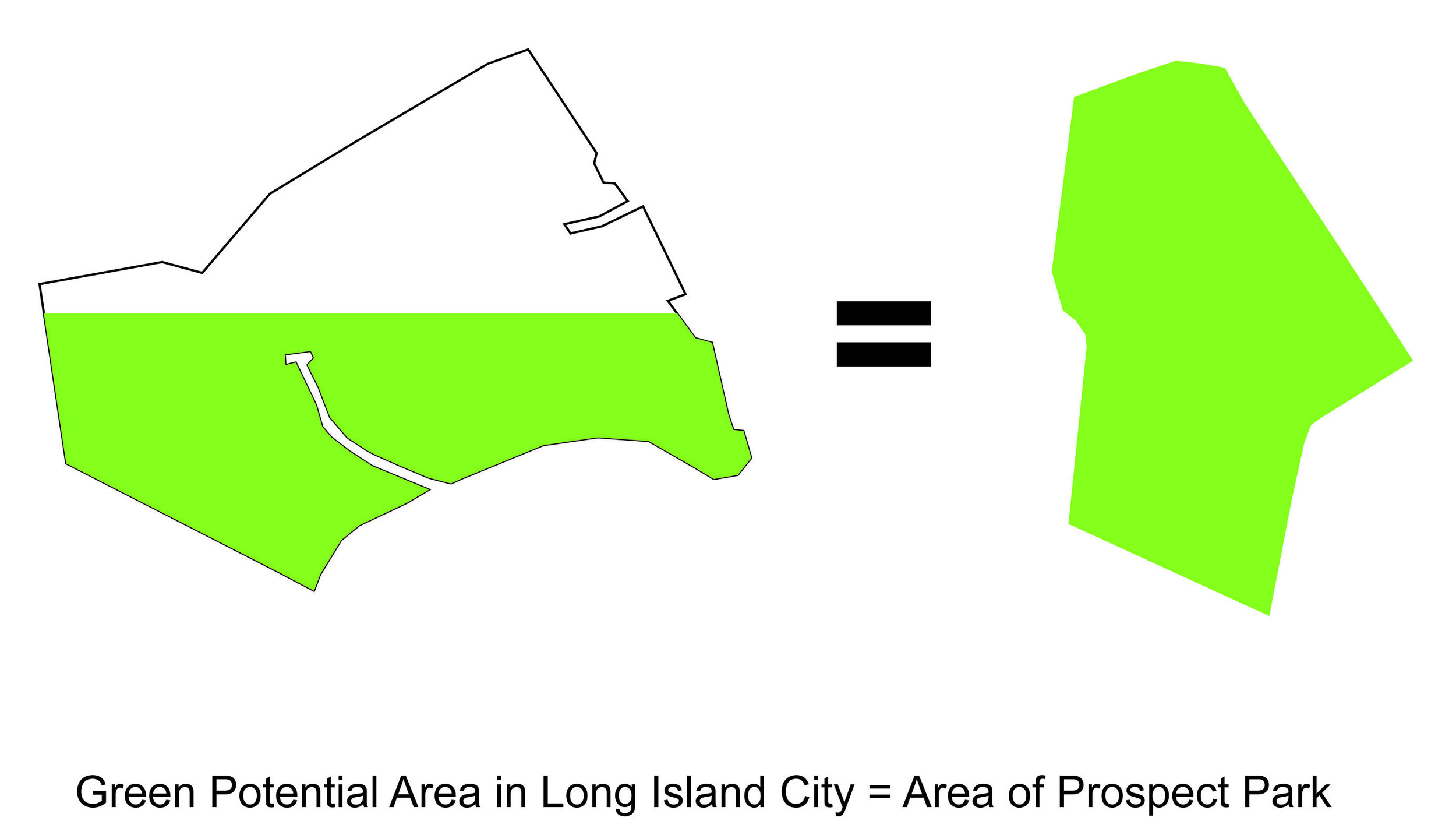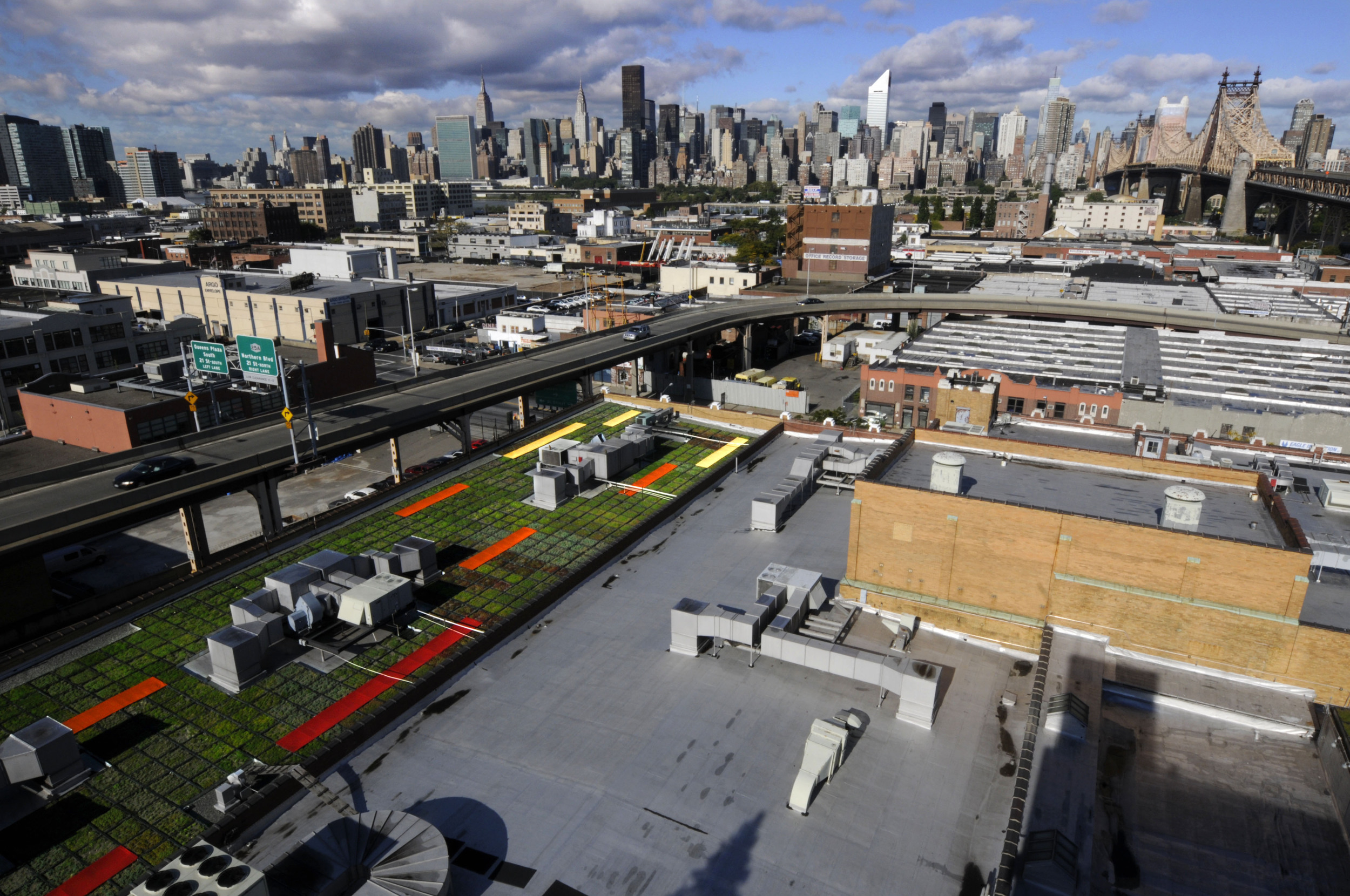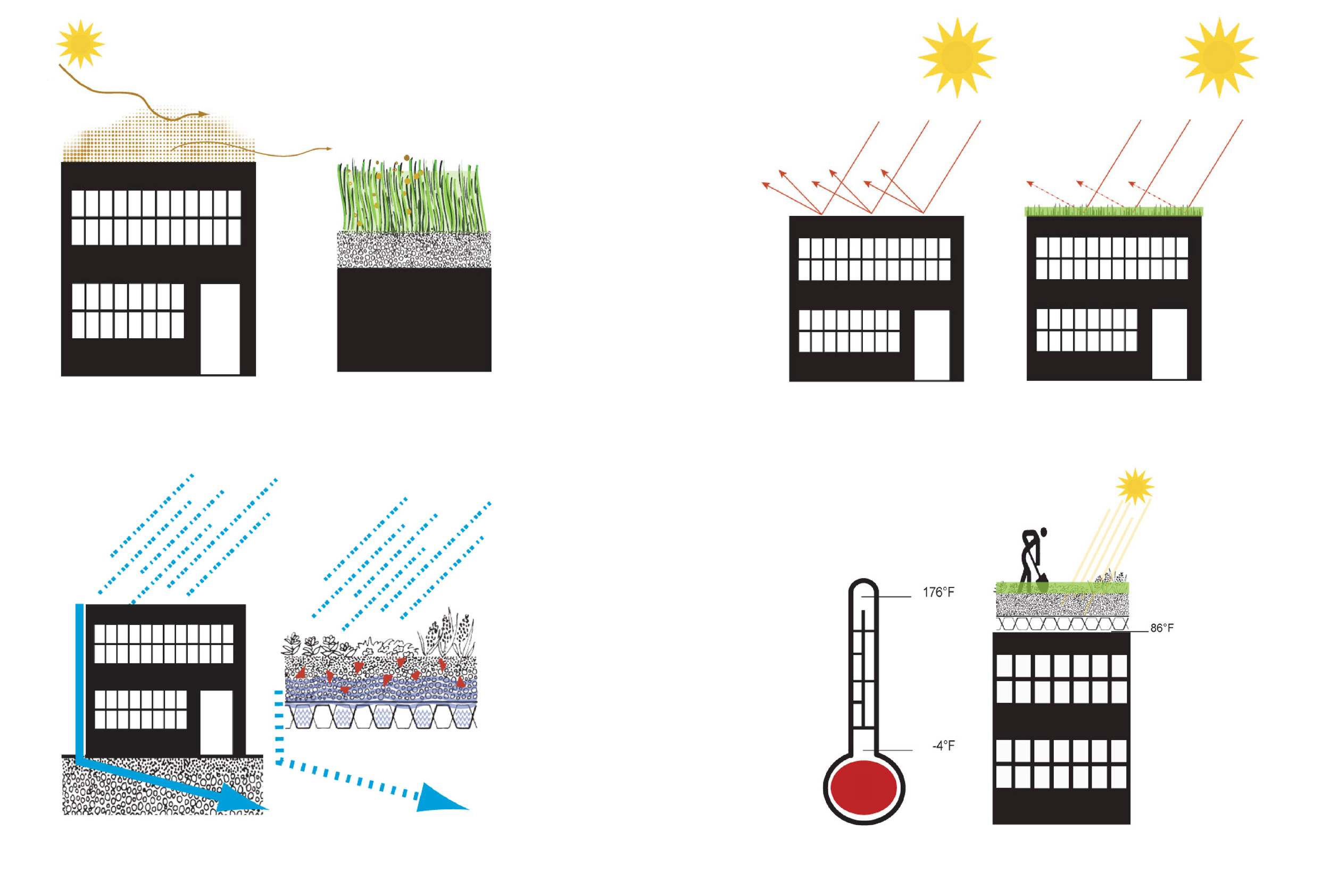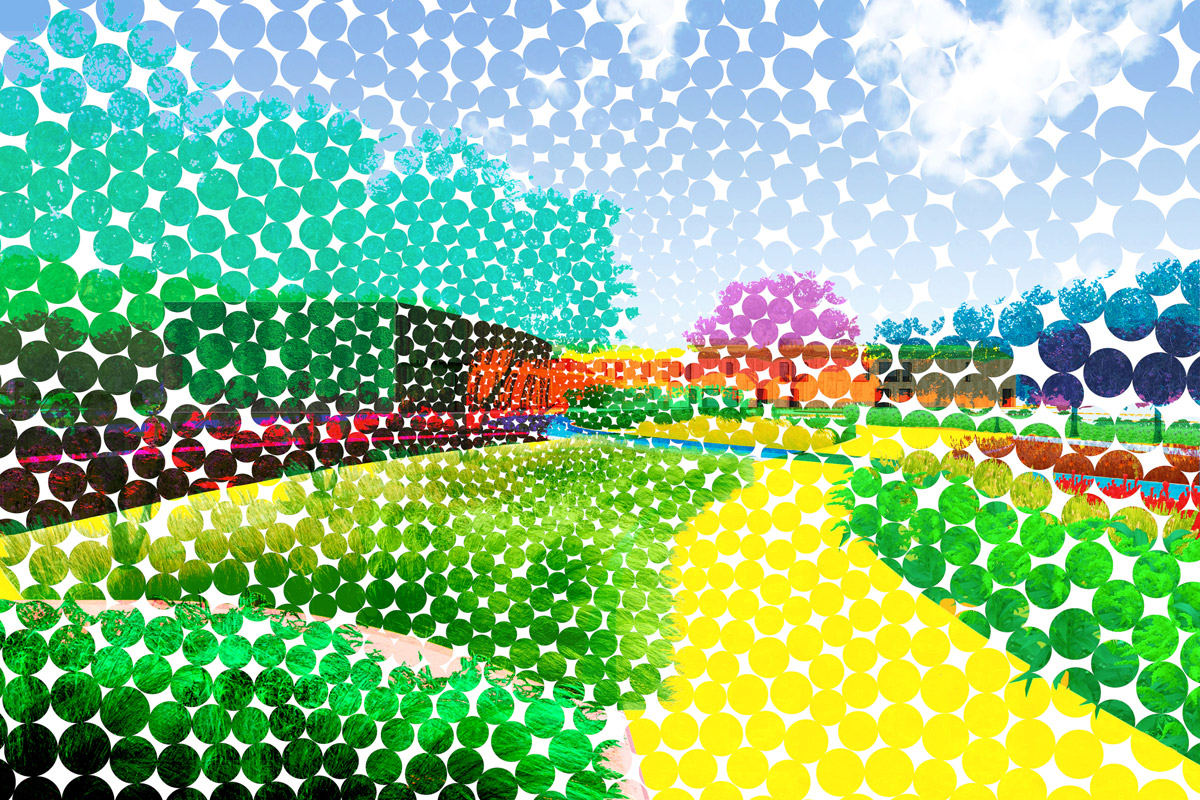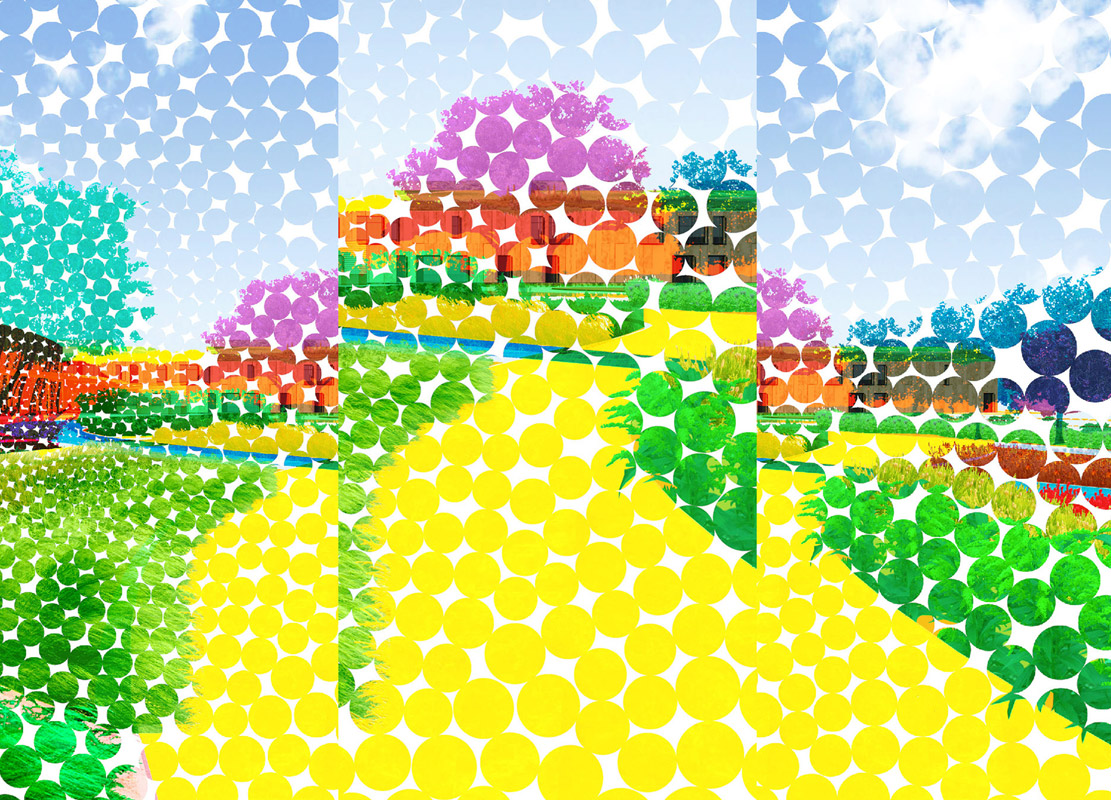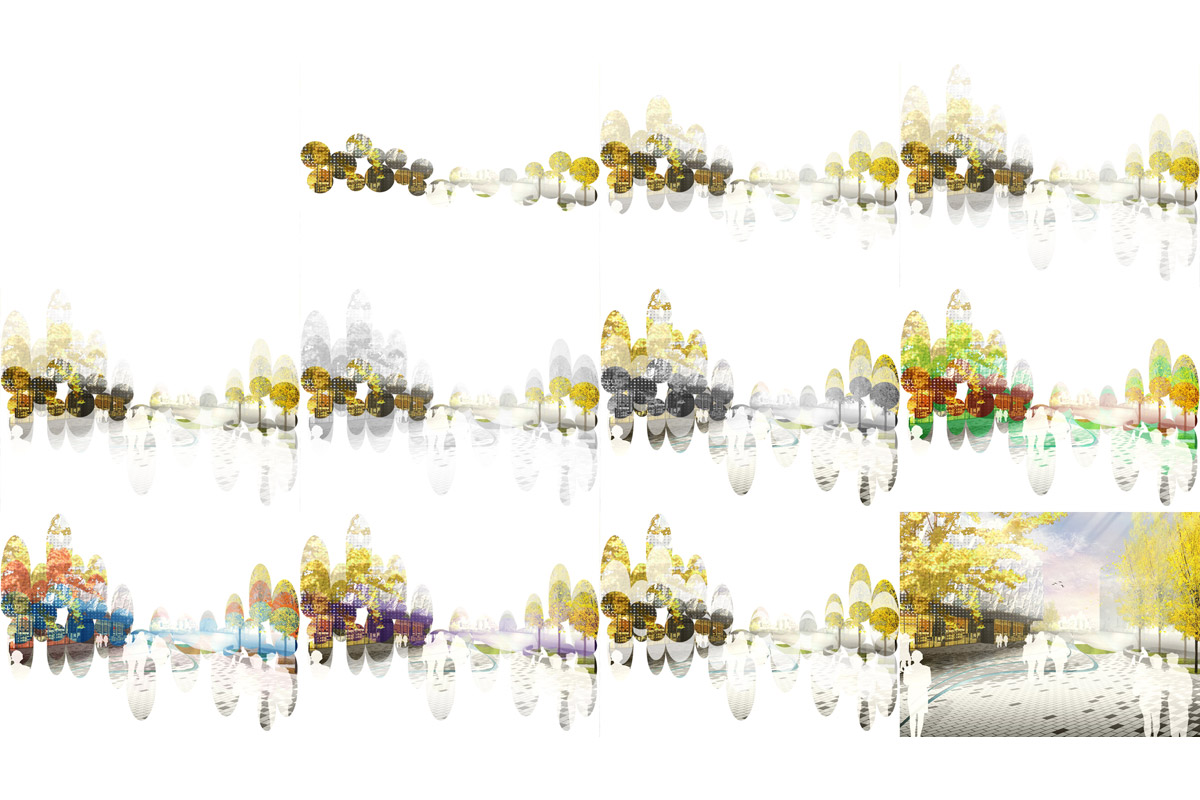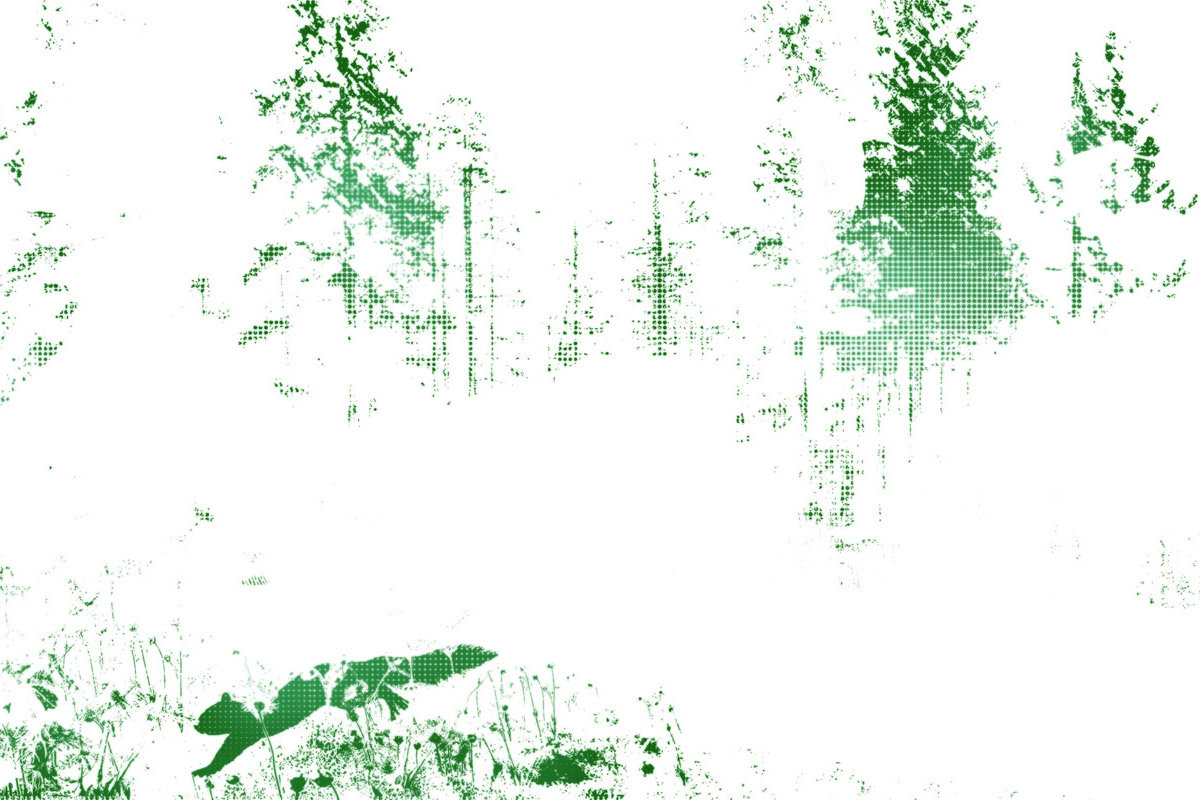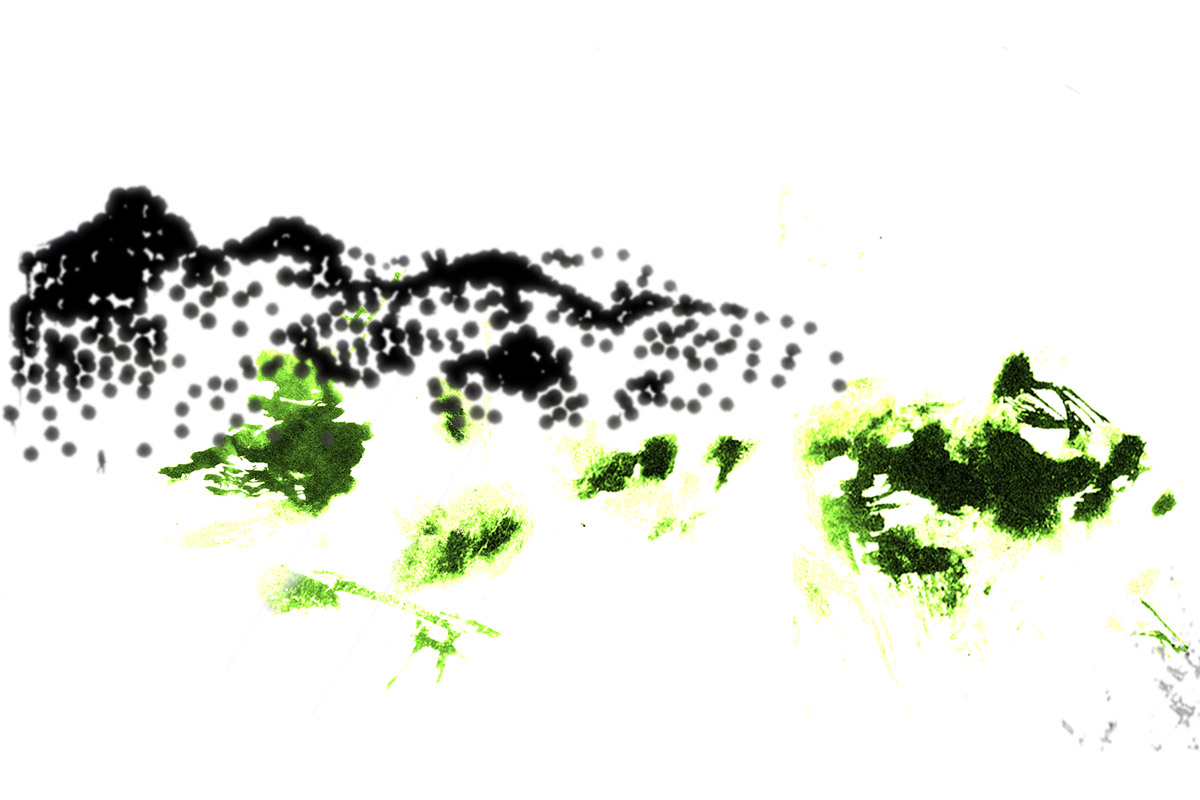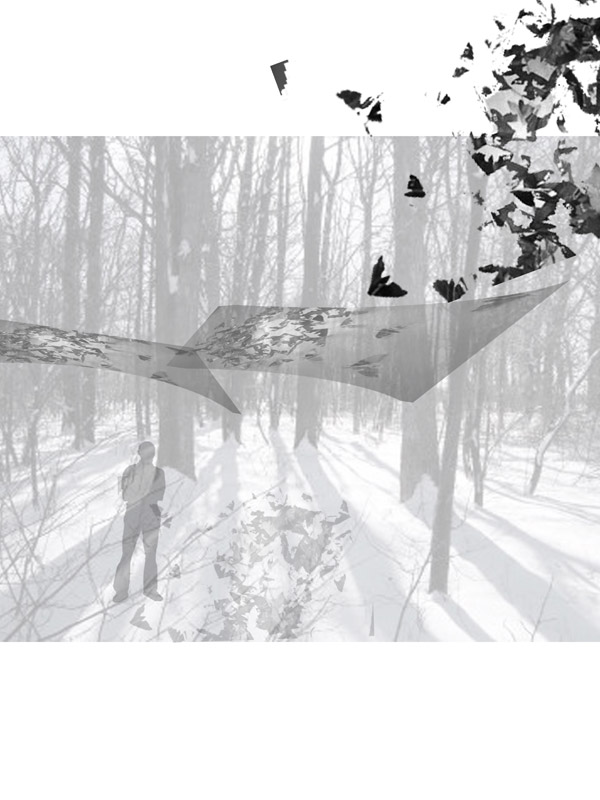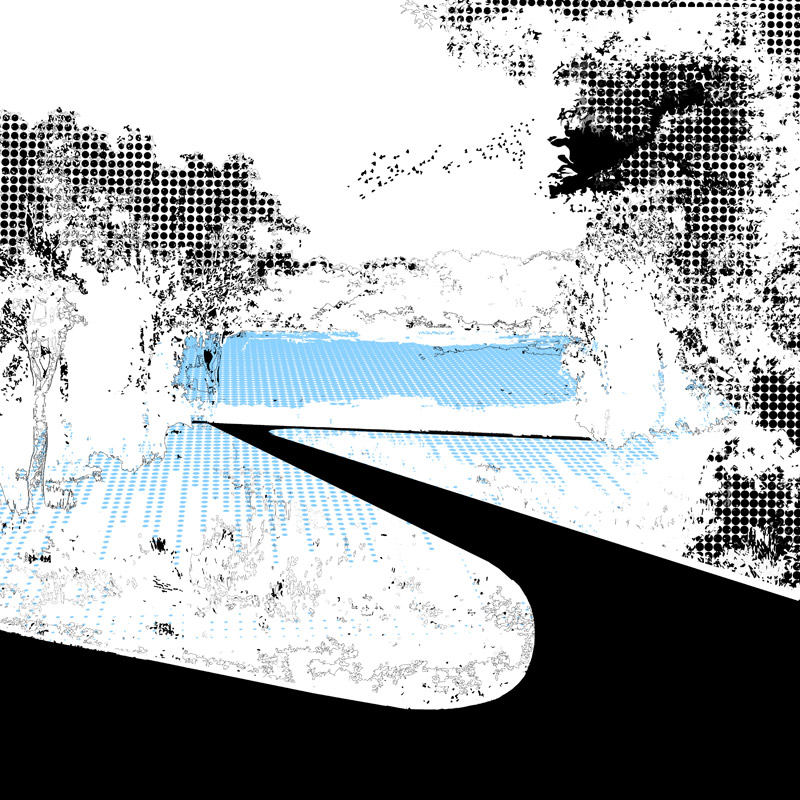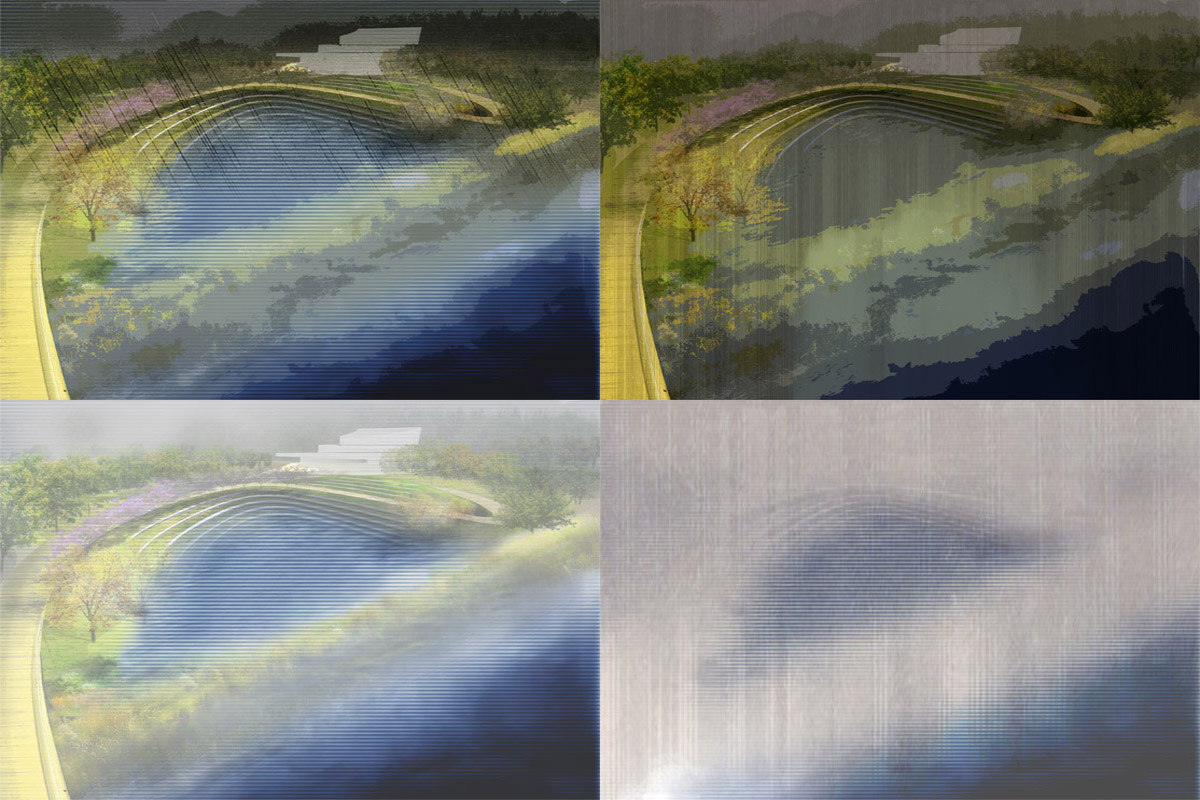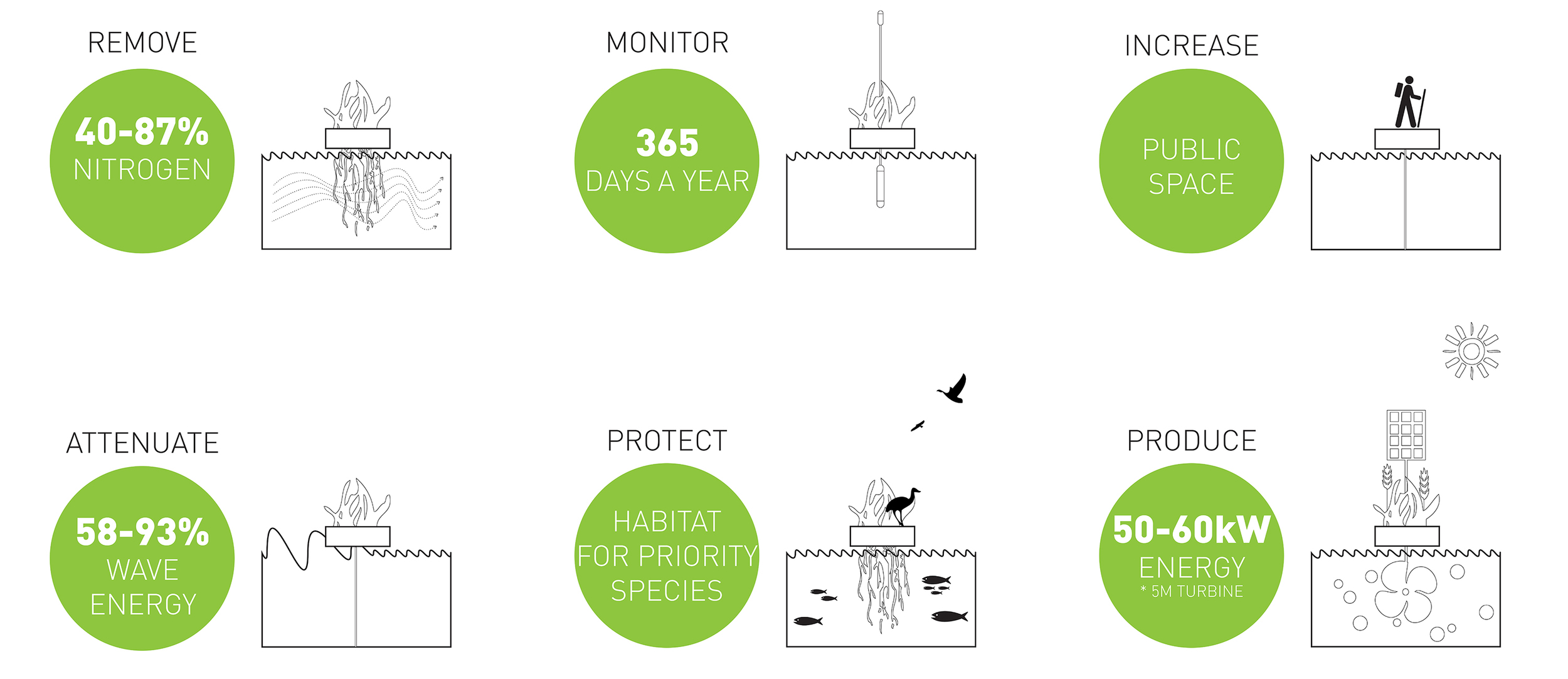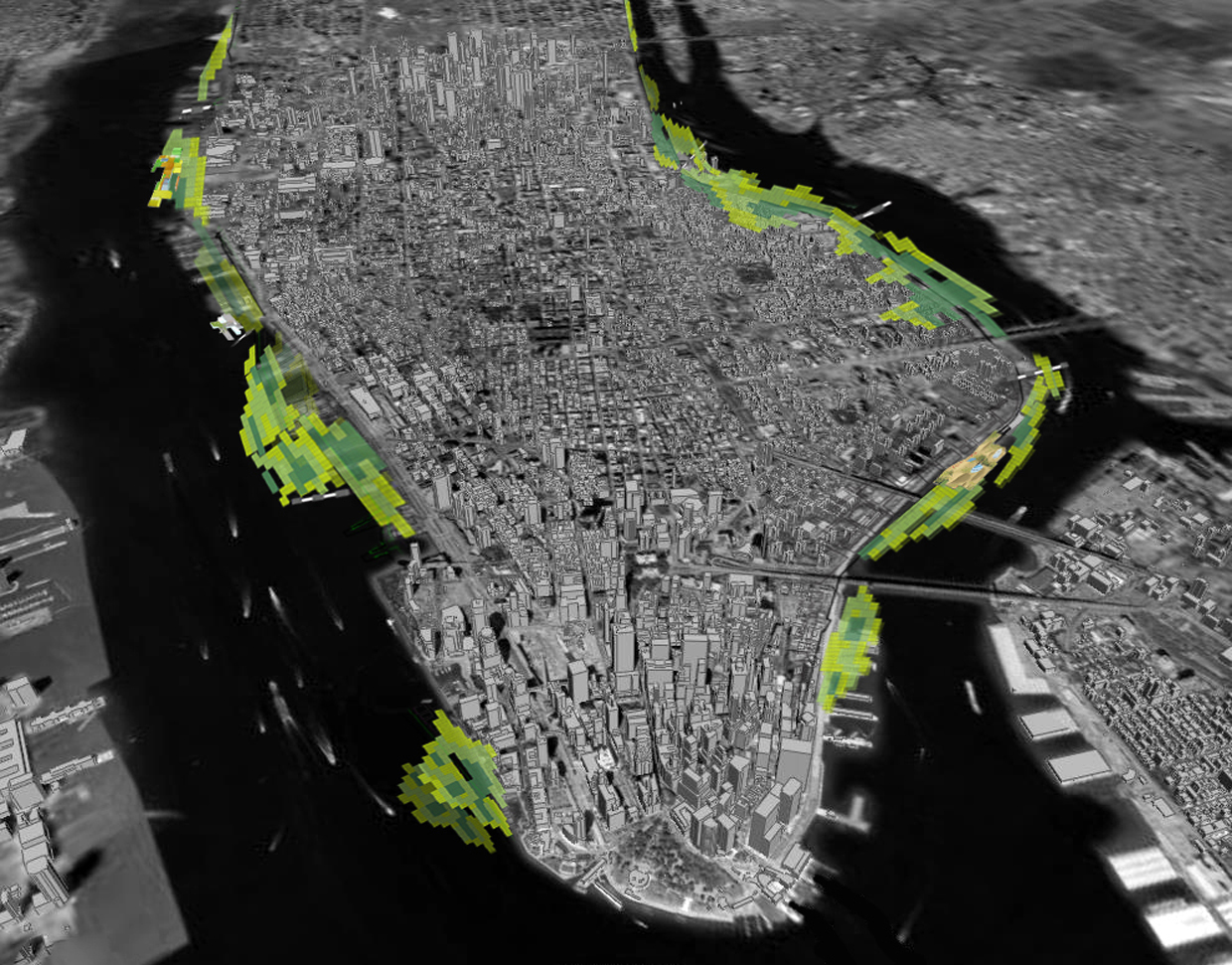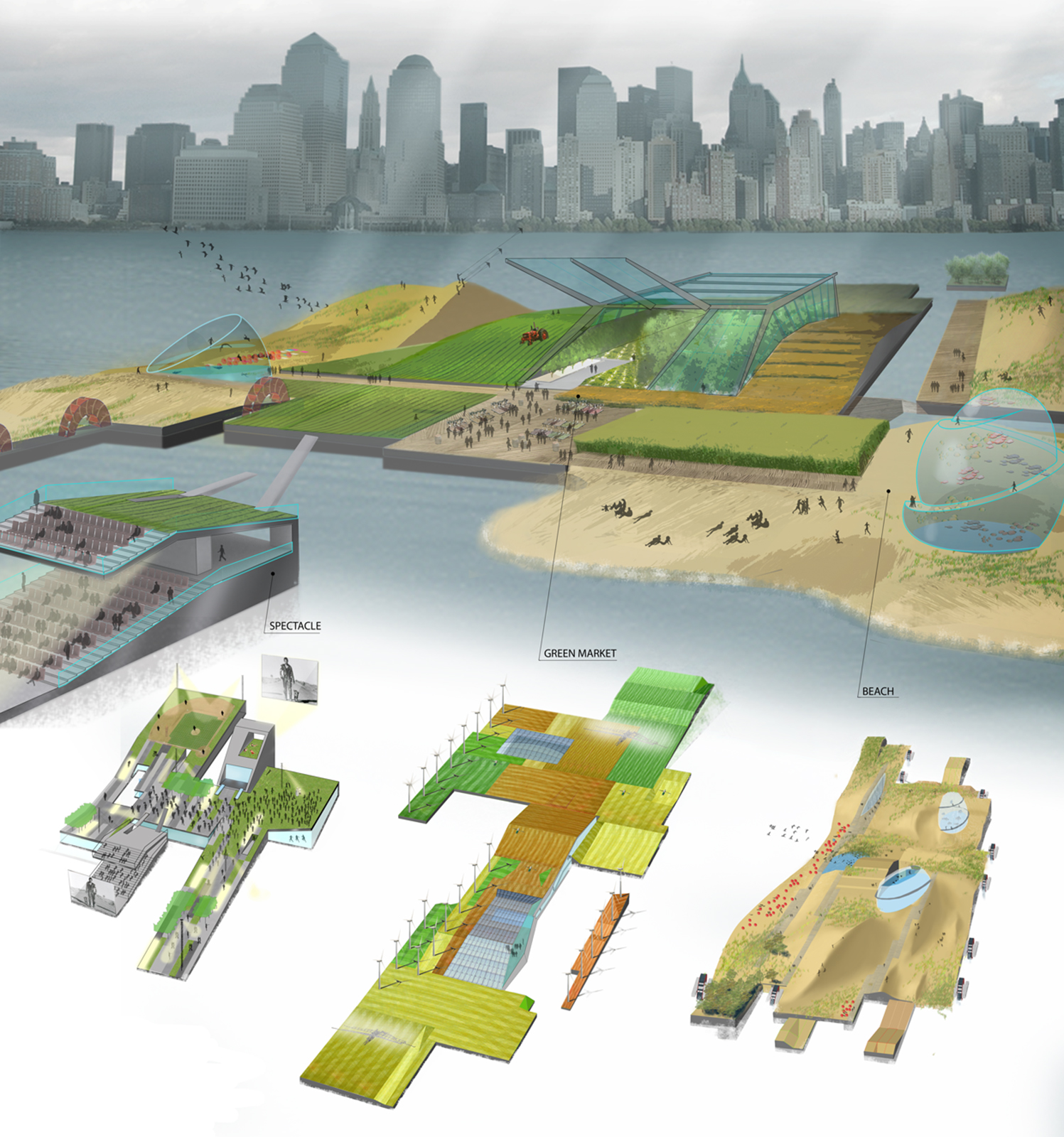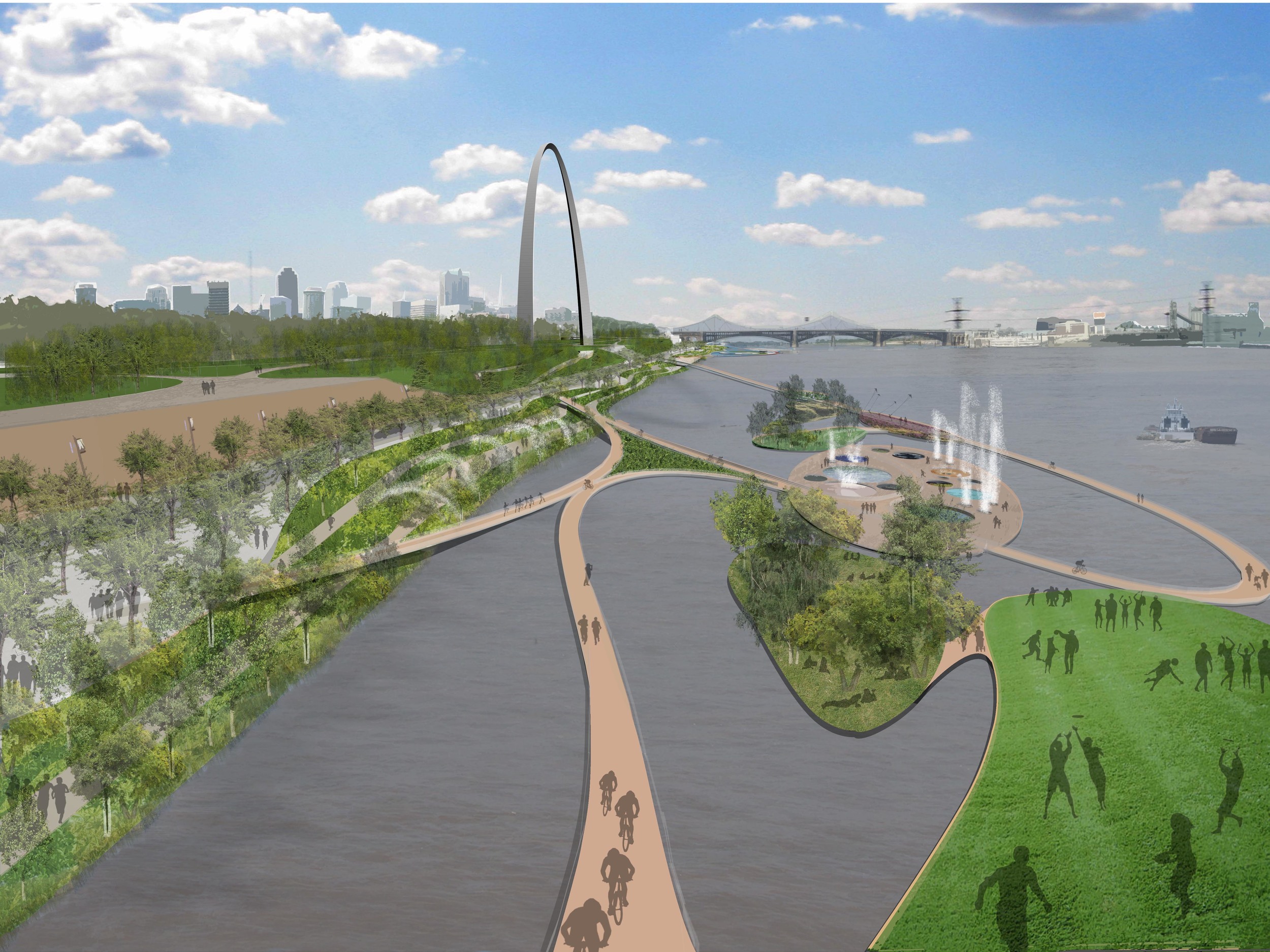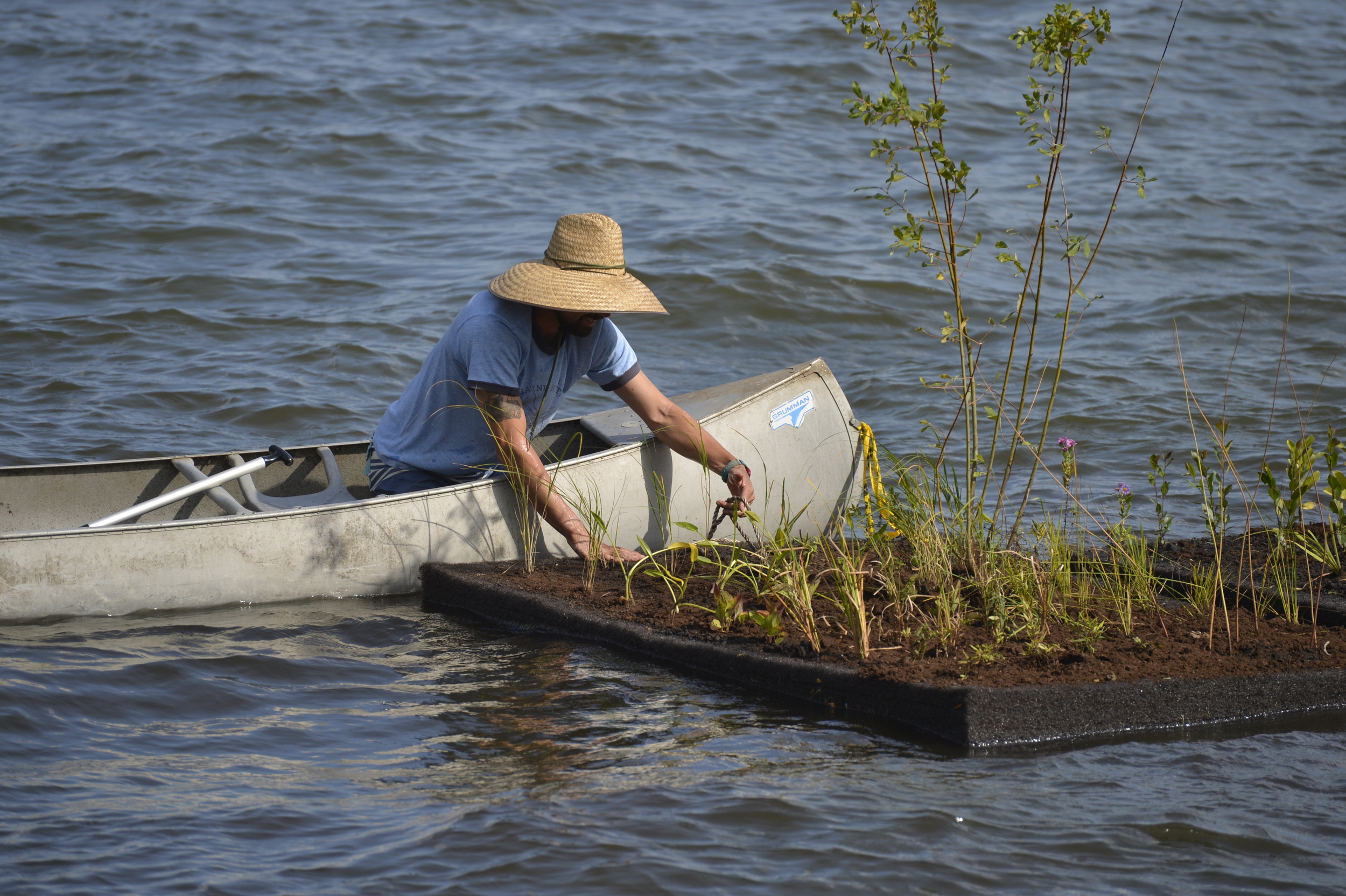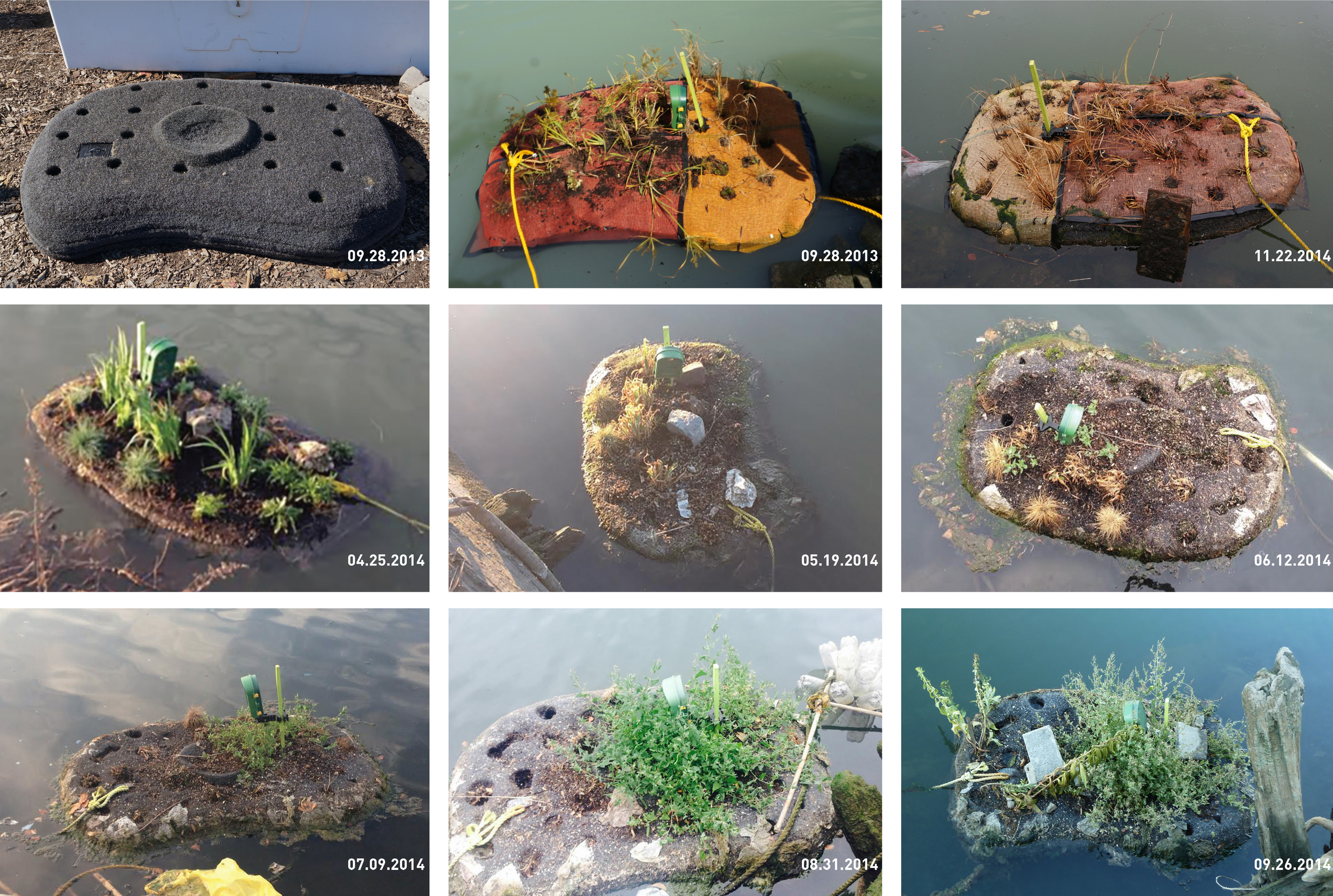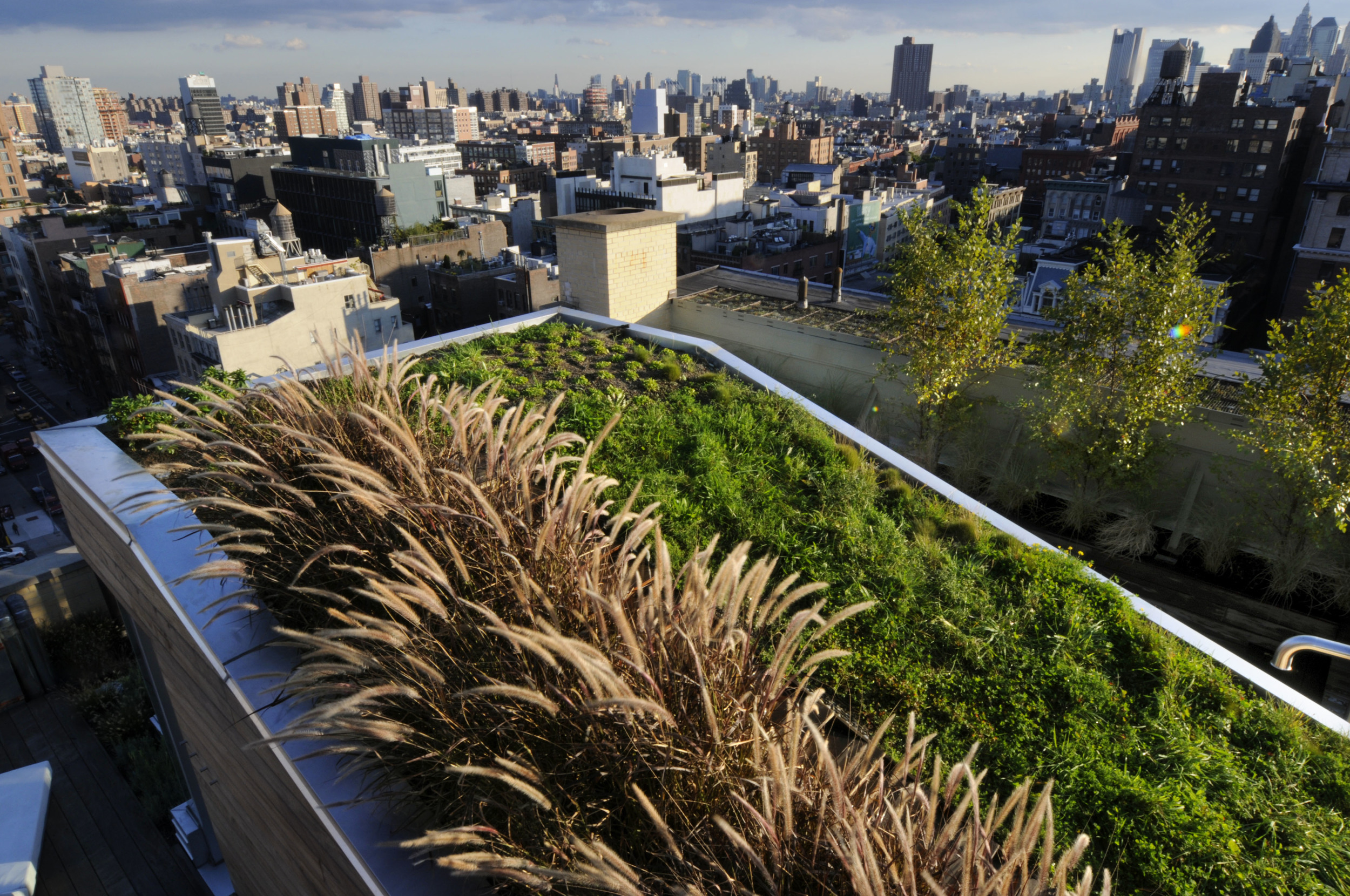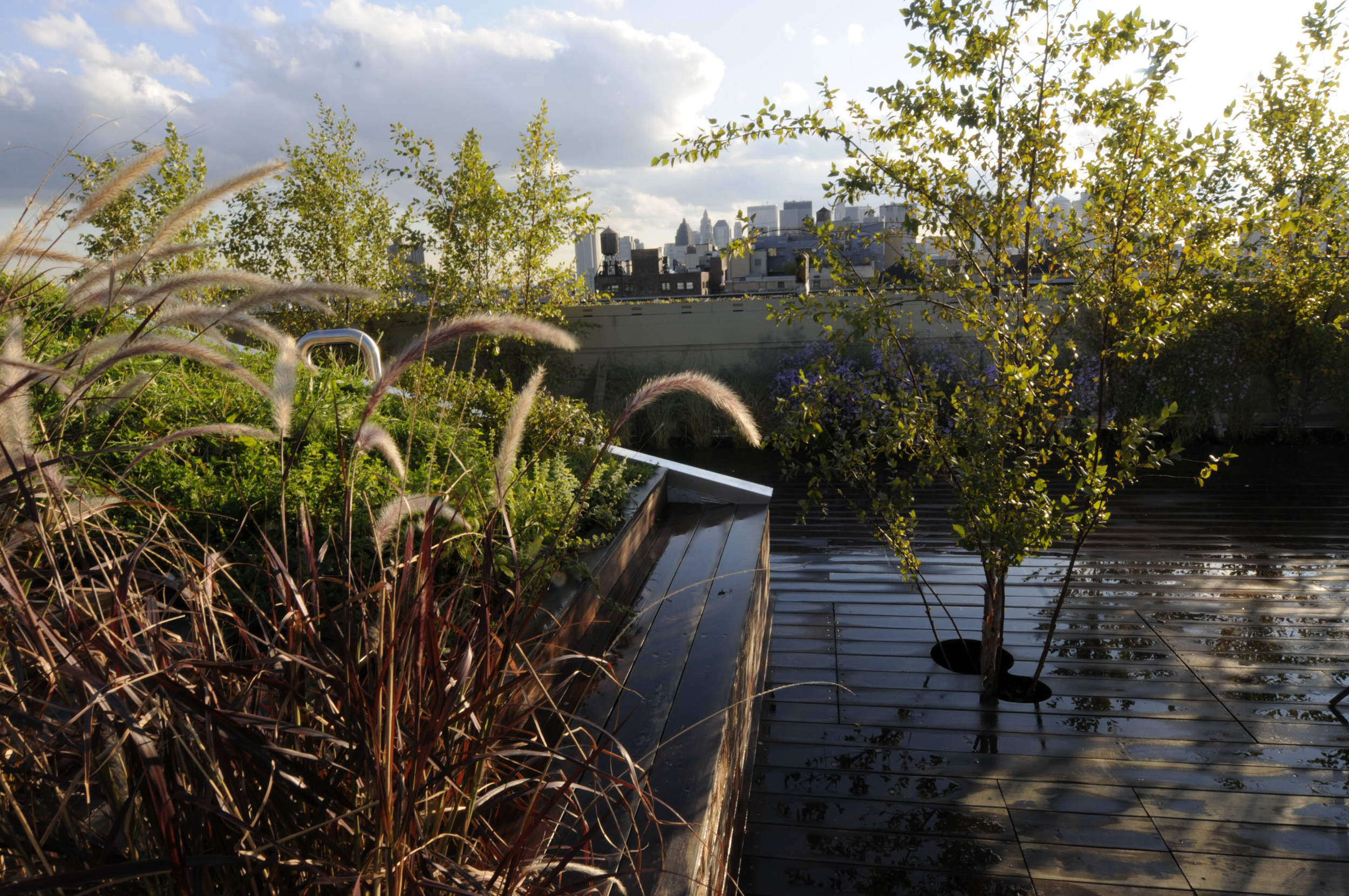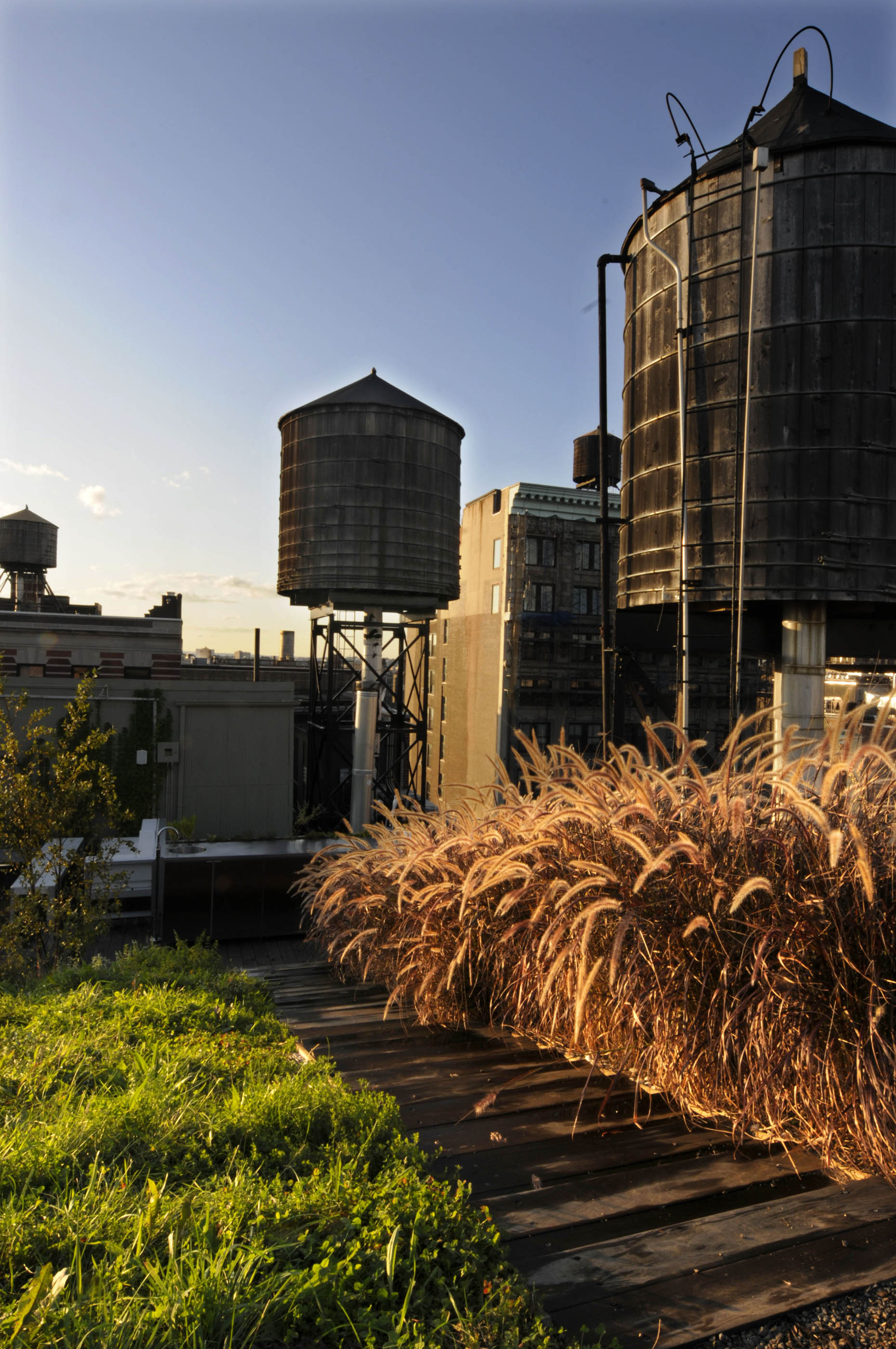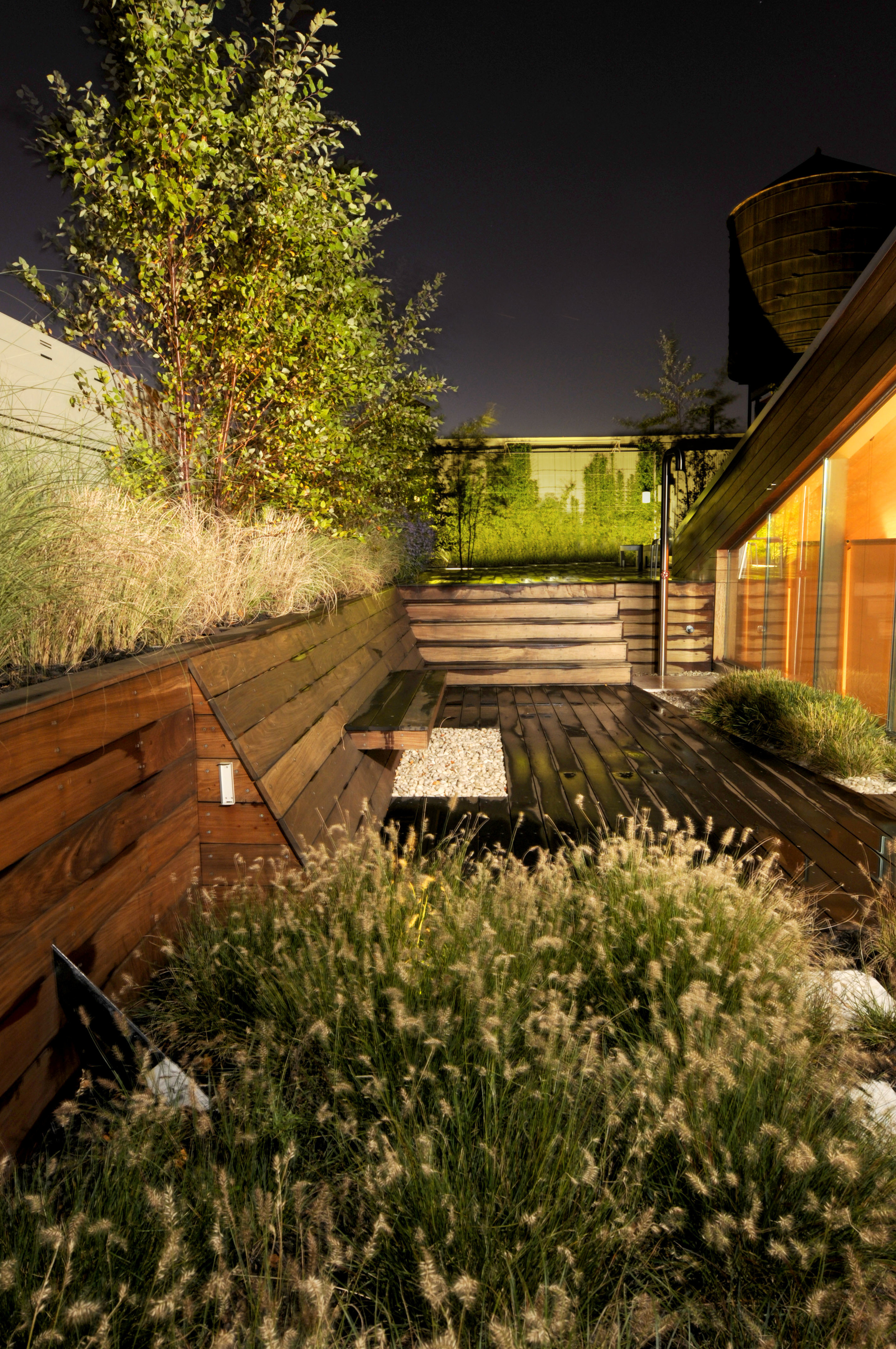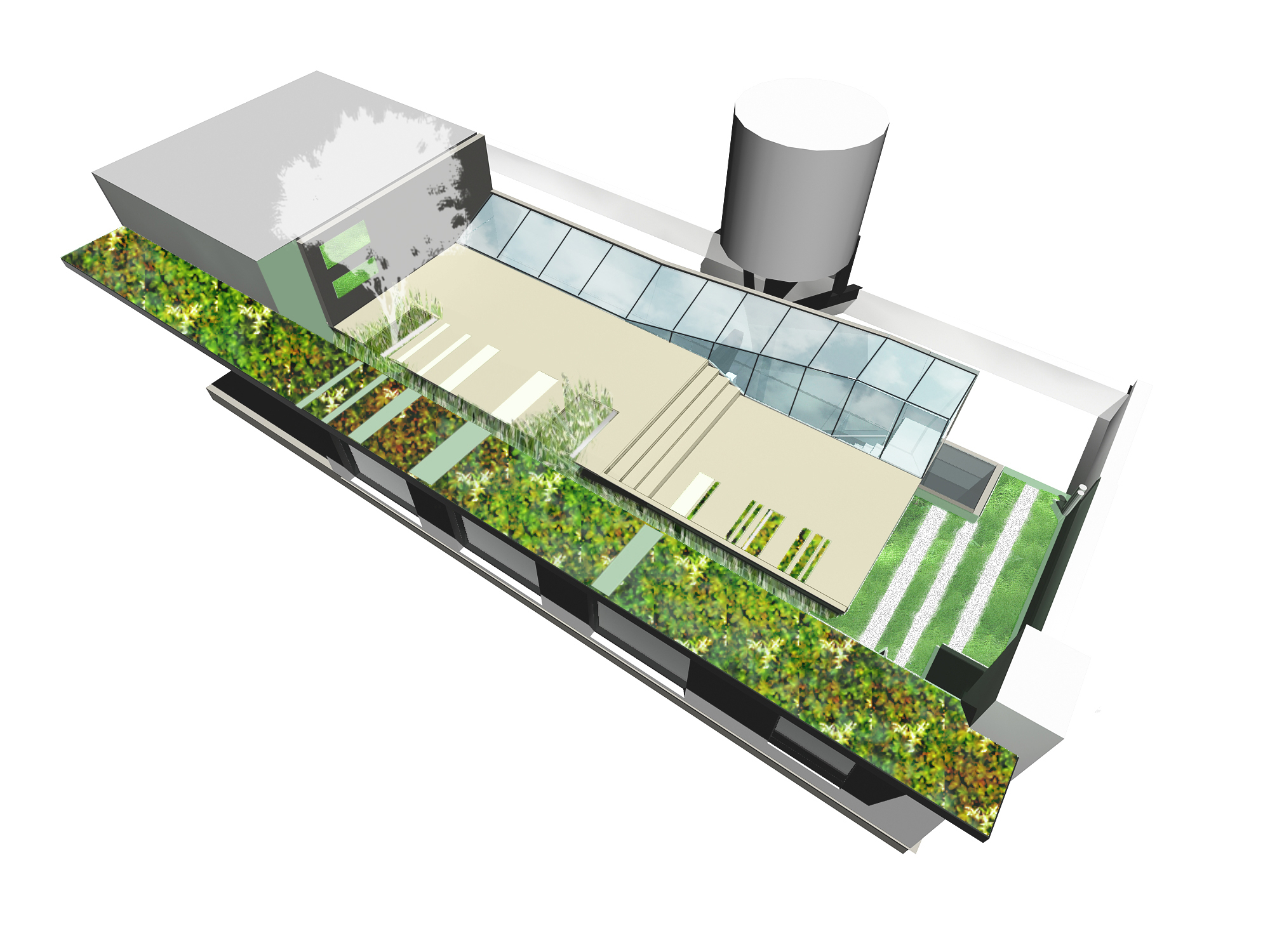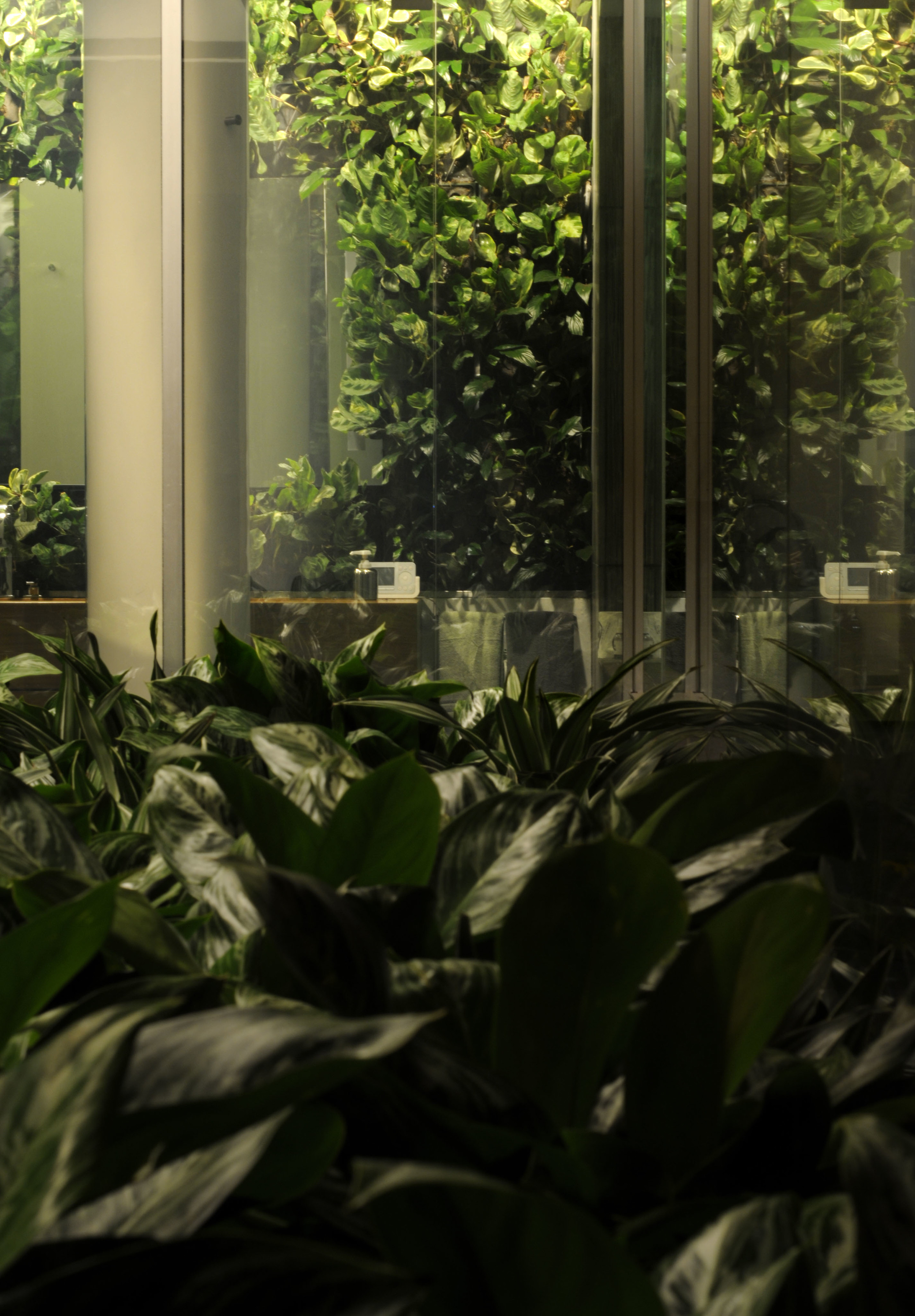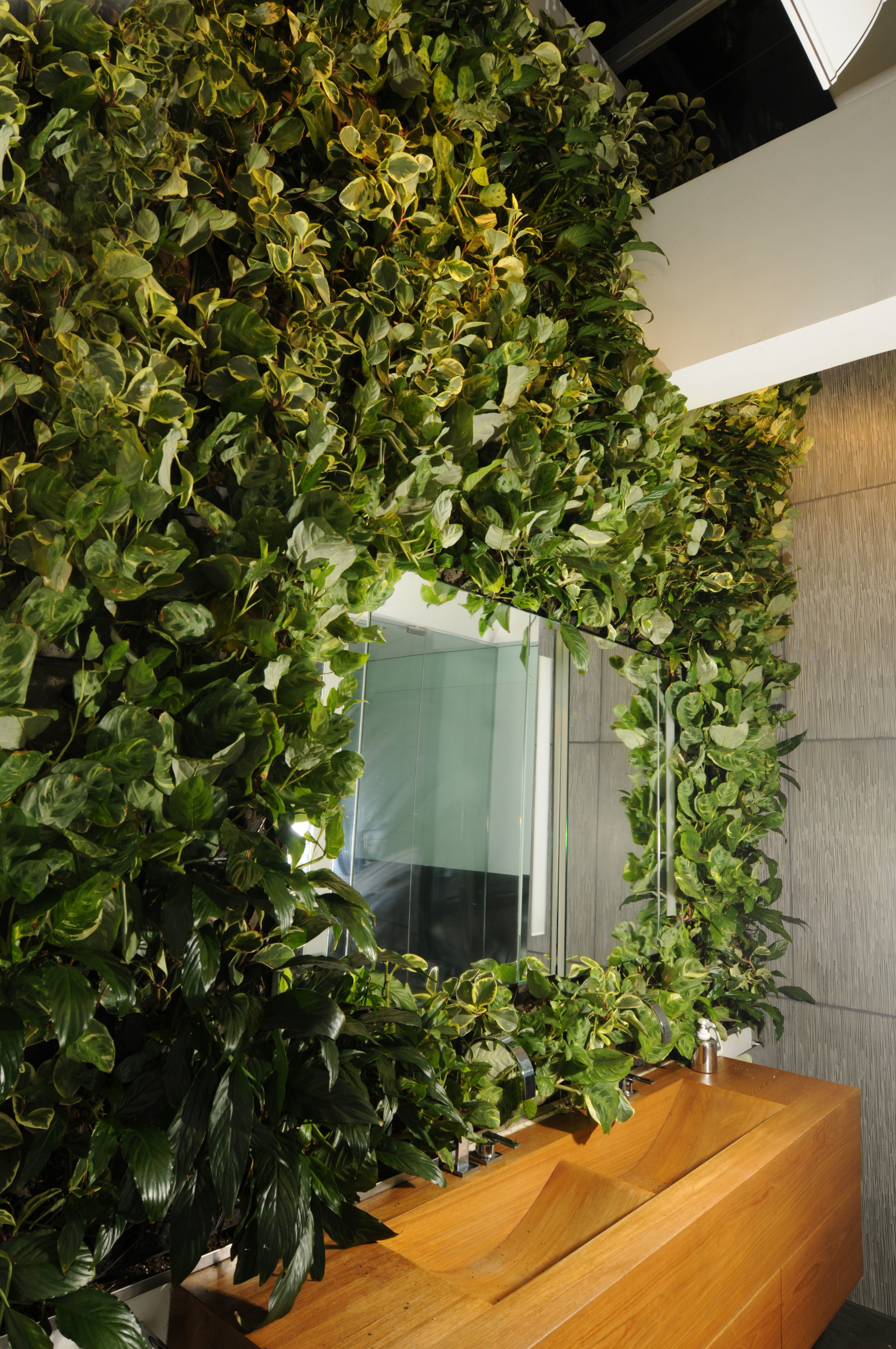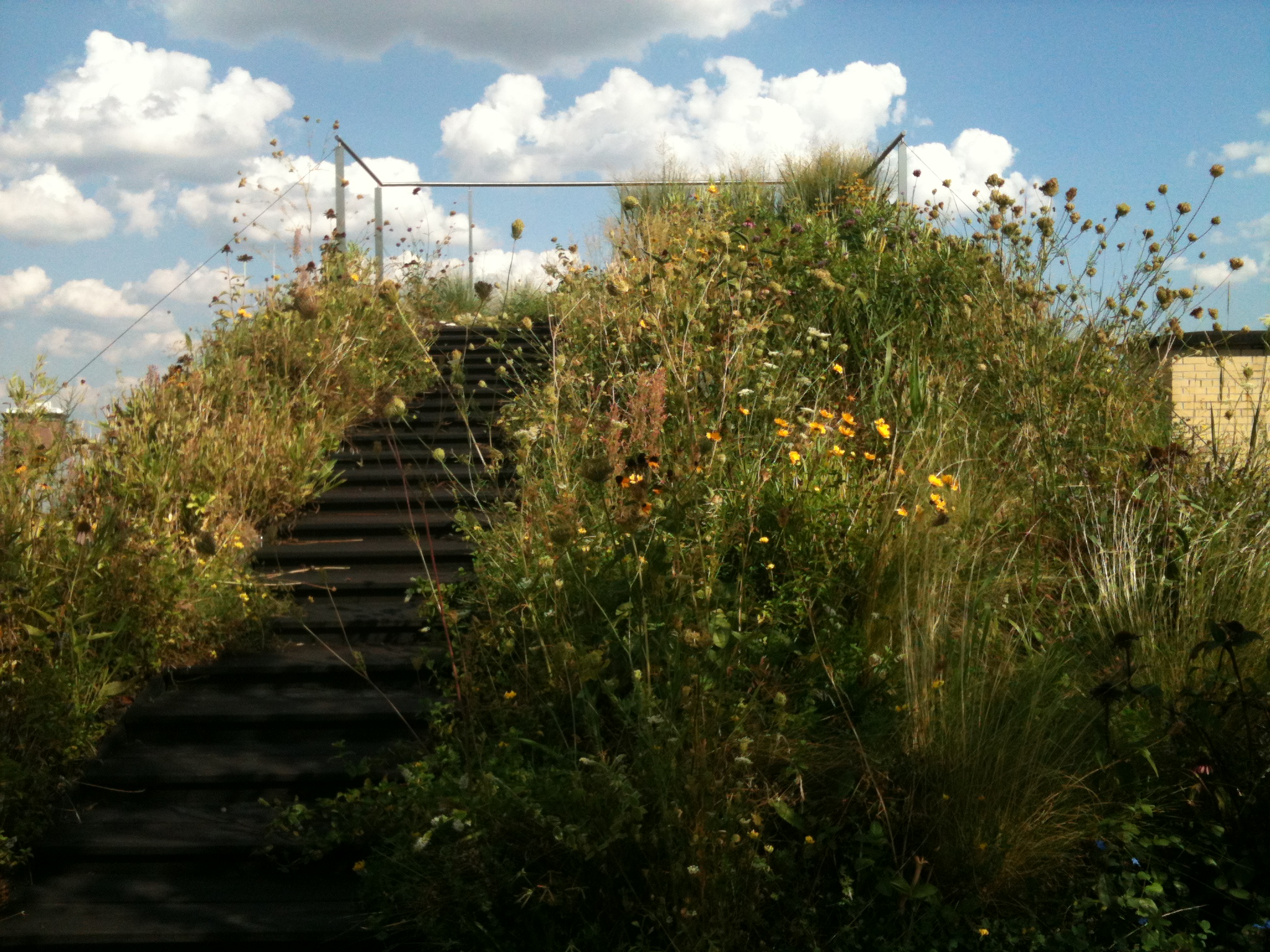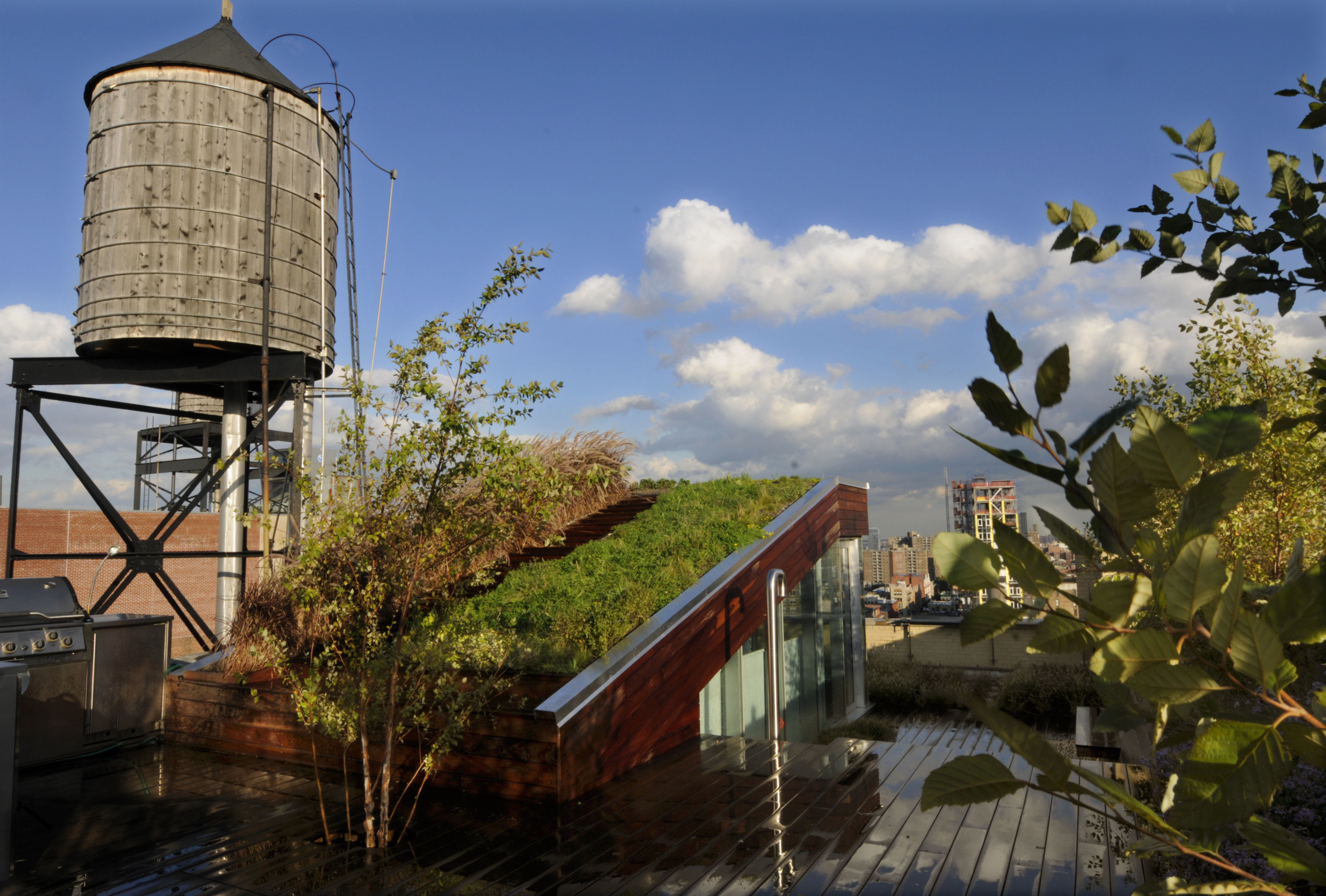2010 - Buffalo, NY, USA
University of Buffalo Solar Park
Buffalo, NY, USA
CLIENT University of Buffalo / New York Power Authority (NYPA) / STATUS Competition Finalist, 2010 / SIZE 6 acres / DESIGN TEAM Balmori Associates, Inc.
Balmori Associates with their proposal of “Public Power Park“ was chosen as one of three finalists out of 20 artists invited to compete for the design of a new ‘Solar Park’ by the university of Buffalo with the New York Power Authority (NYPA). The installation was required to use 5,000 solar panels within a landscape to produce energy for the student housing and proposed one of the largest on any campus in the United States. Balmori’s proposal addresses the nature of technological infrastructure, where nature and technology intersect and proposes a new kind of public space, one that is a programmed response to producing power, and powering public space.
Modeled after the lake effect, Solar Effects captures weather to produce power and public space. The lake effect marries wind, humidity, temperature and topography creating a powerful weather machine that shapes our collective experience of landscape. This phenomenon drifts through the sky painting the land with rain and snow. The solar grid is pixilated and reordered along the flows of wind and people. The drifting arrangement and varying heights of the panels form a solar topography, optimized for peak power production. Solar education and demonstration are embedded in the project. Water collects in the gently undulating meadows. Mirrors dot the underside of the panels, sparkling in the sun and moonlight, further increasing the solar efficiency of the system. Snow cones register snow and ice in playful sculptures embedded into the structure of the system and an interactive Solar Iceberg glows with the latest solar technologies.


